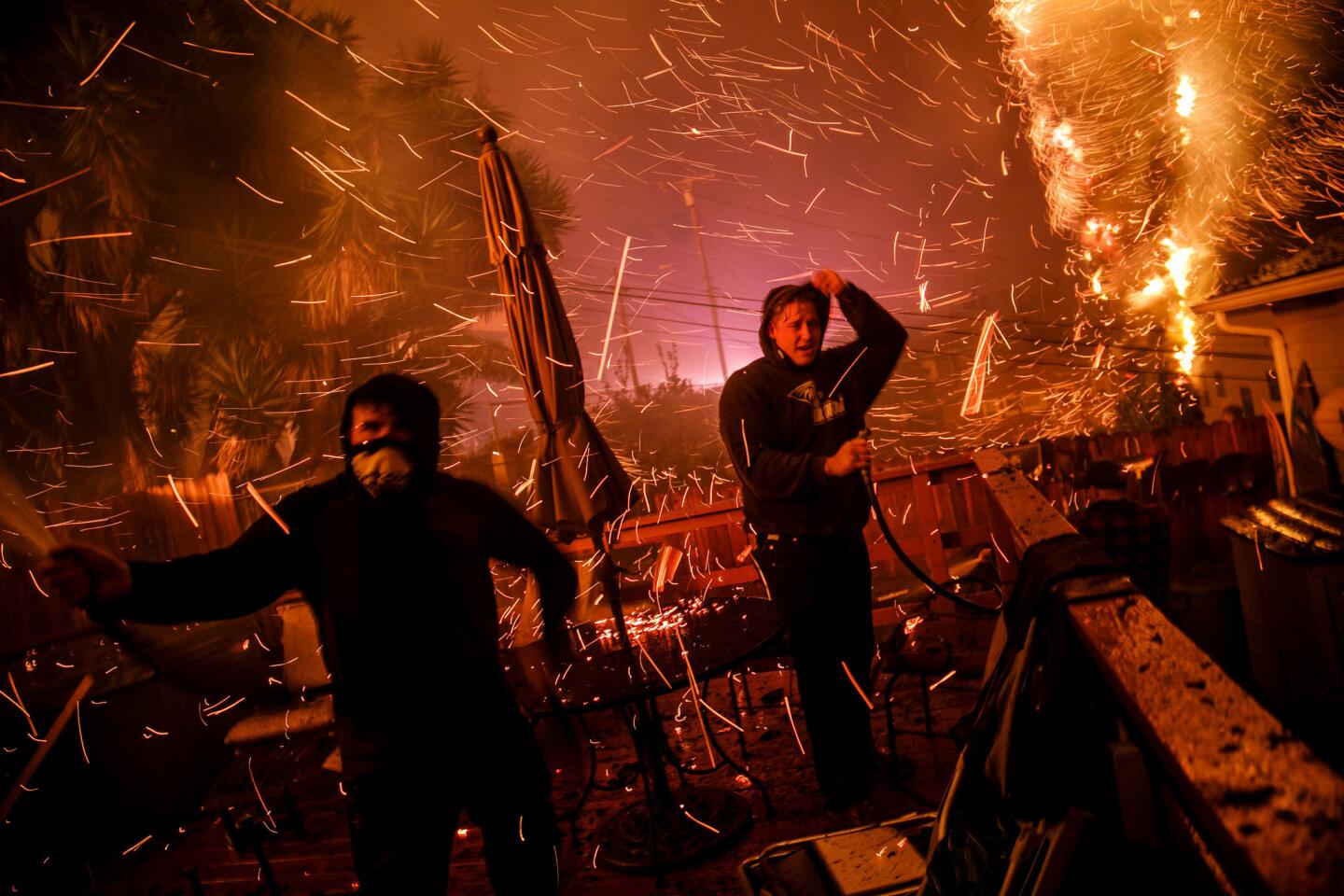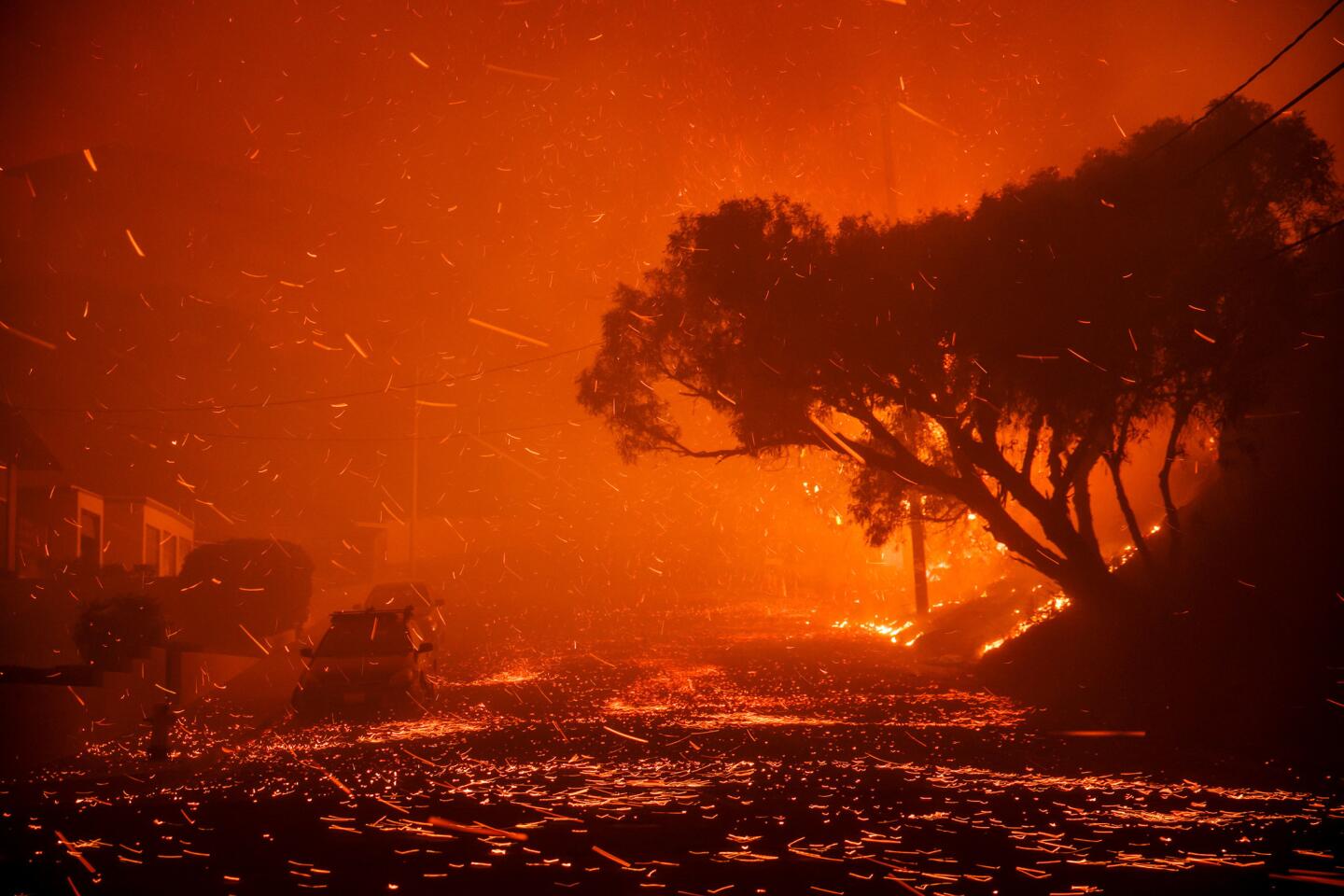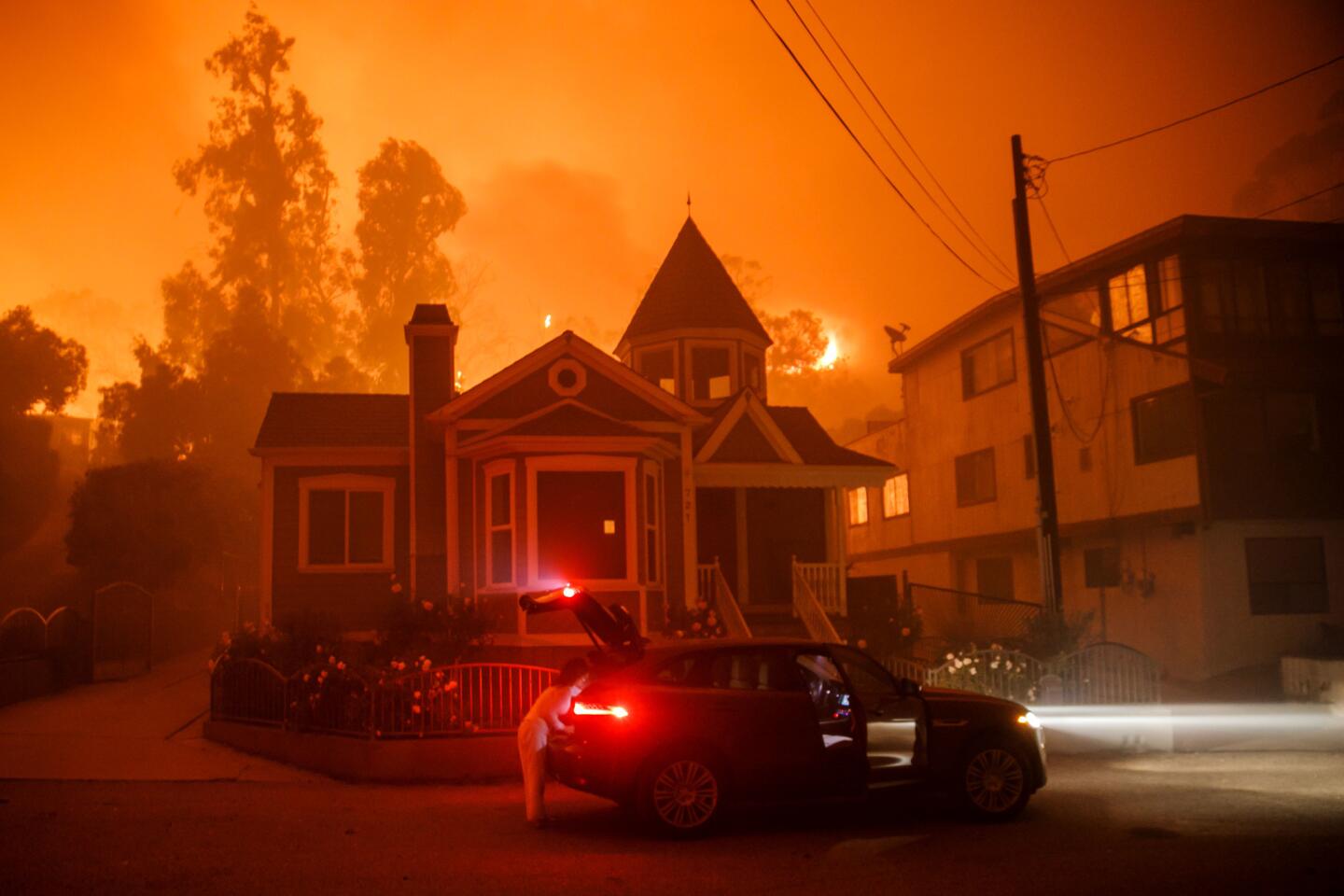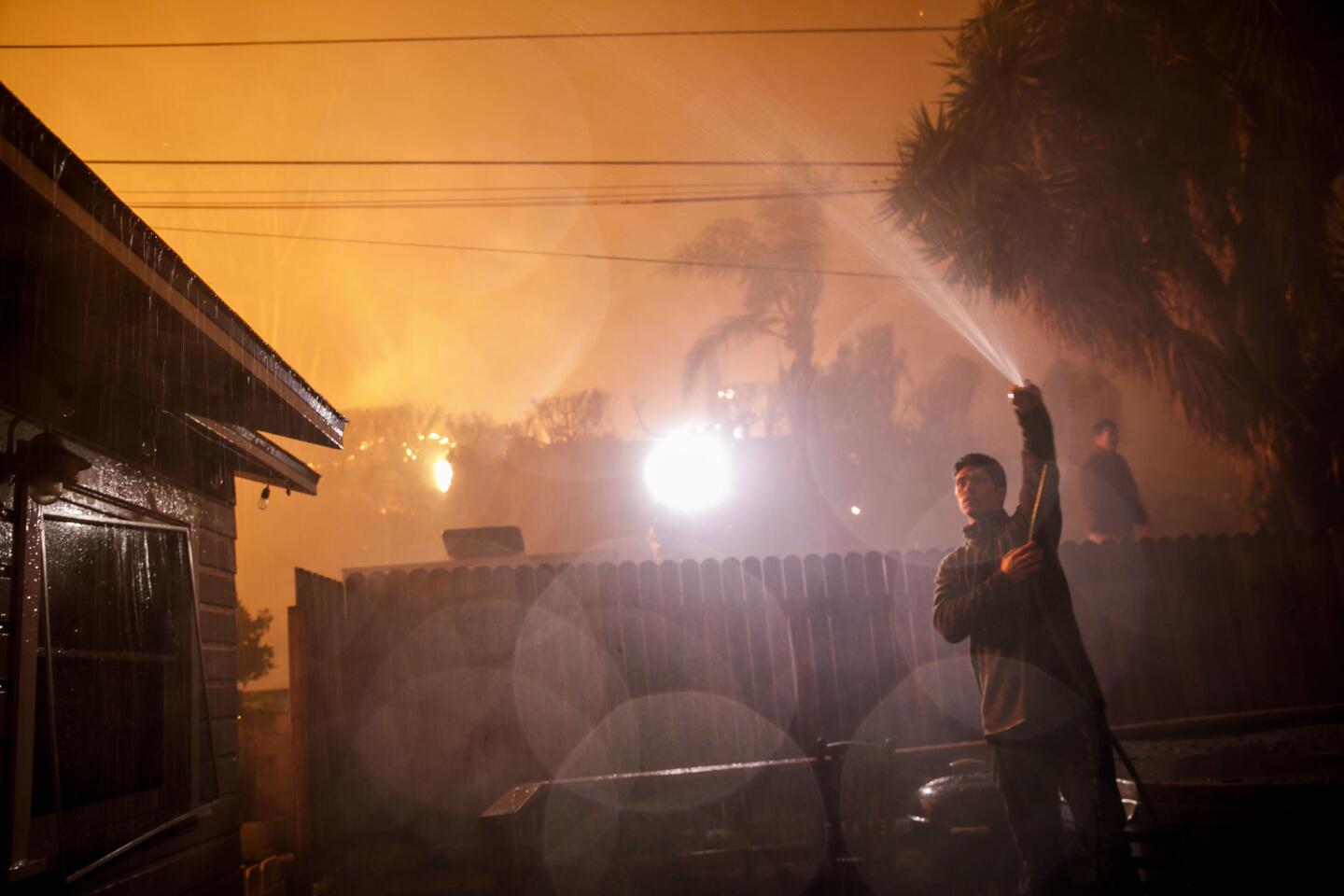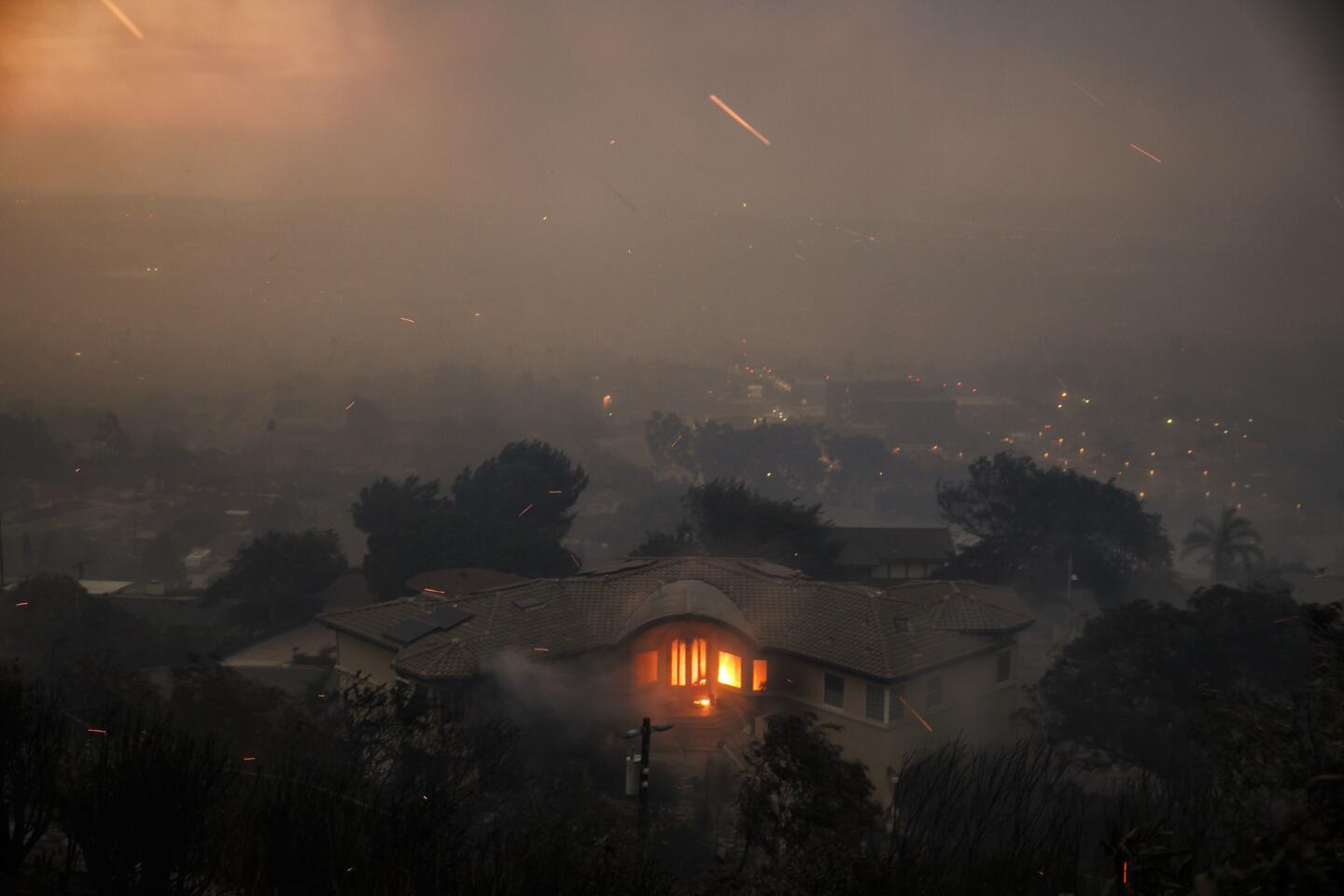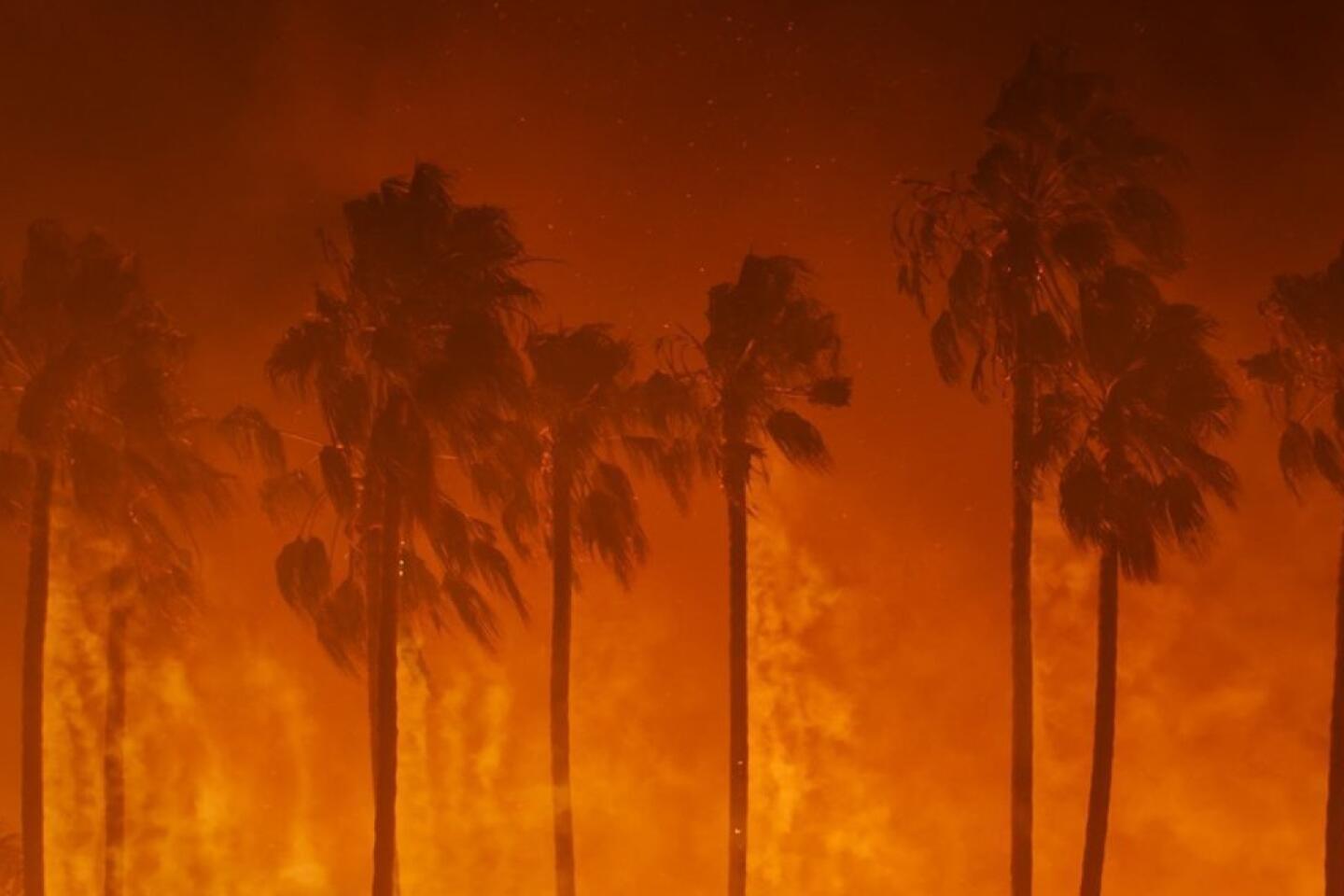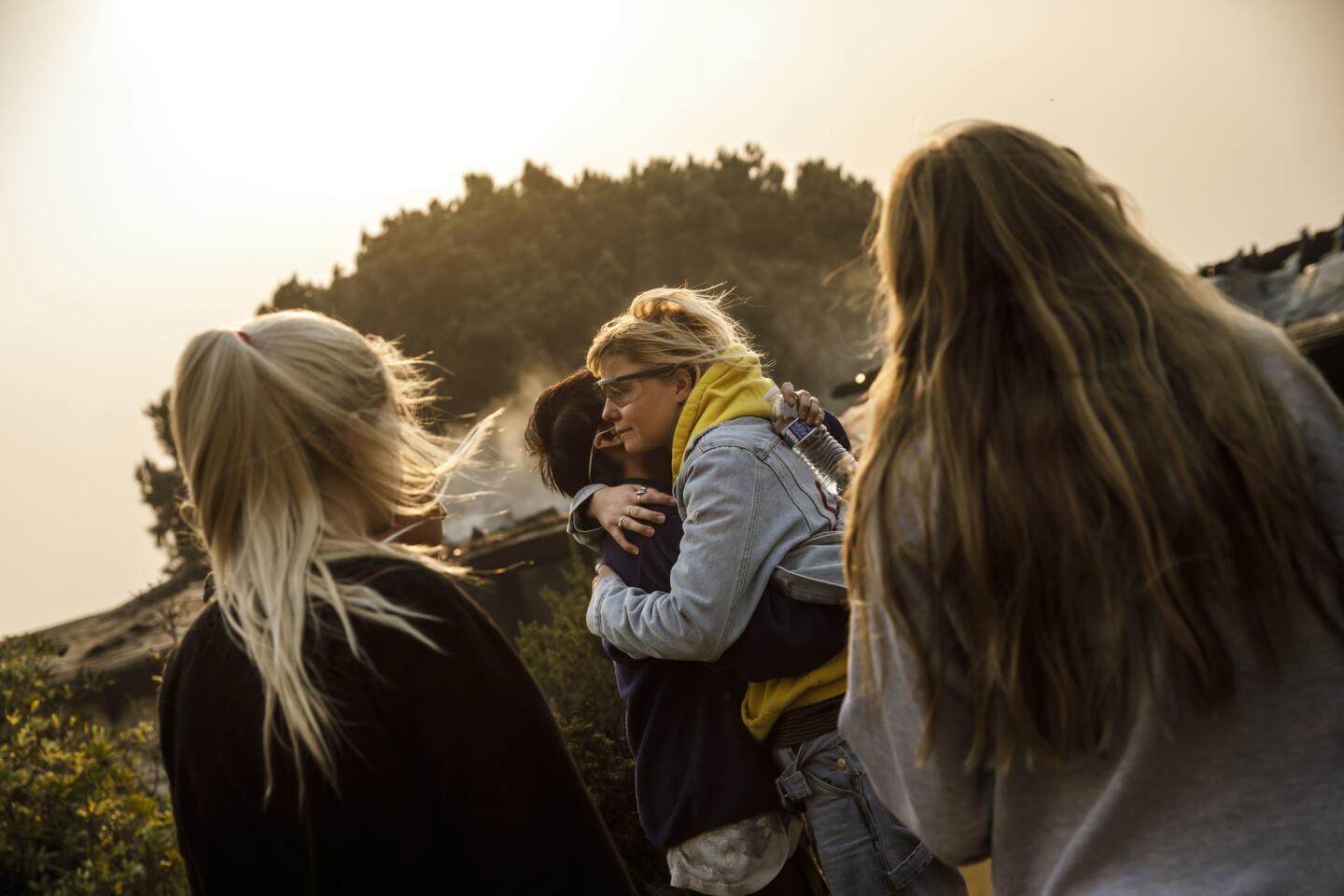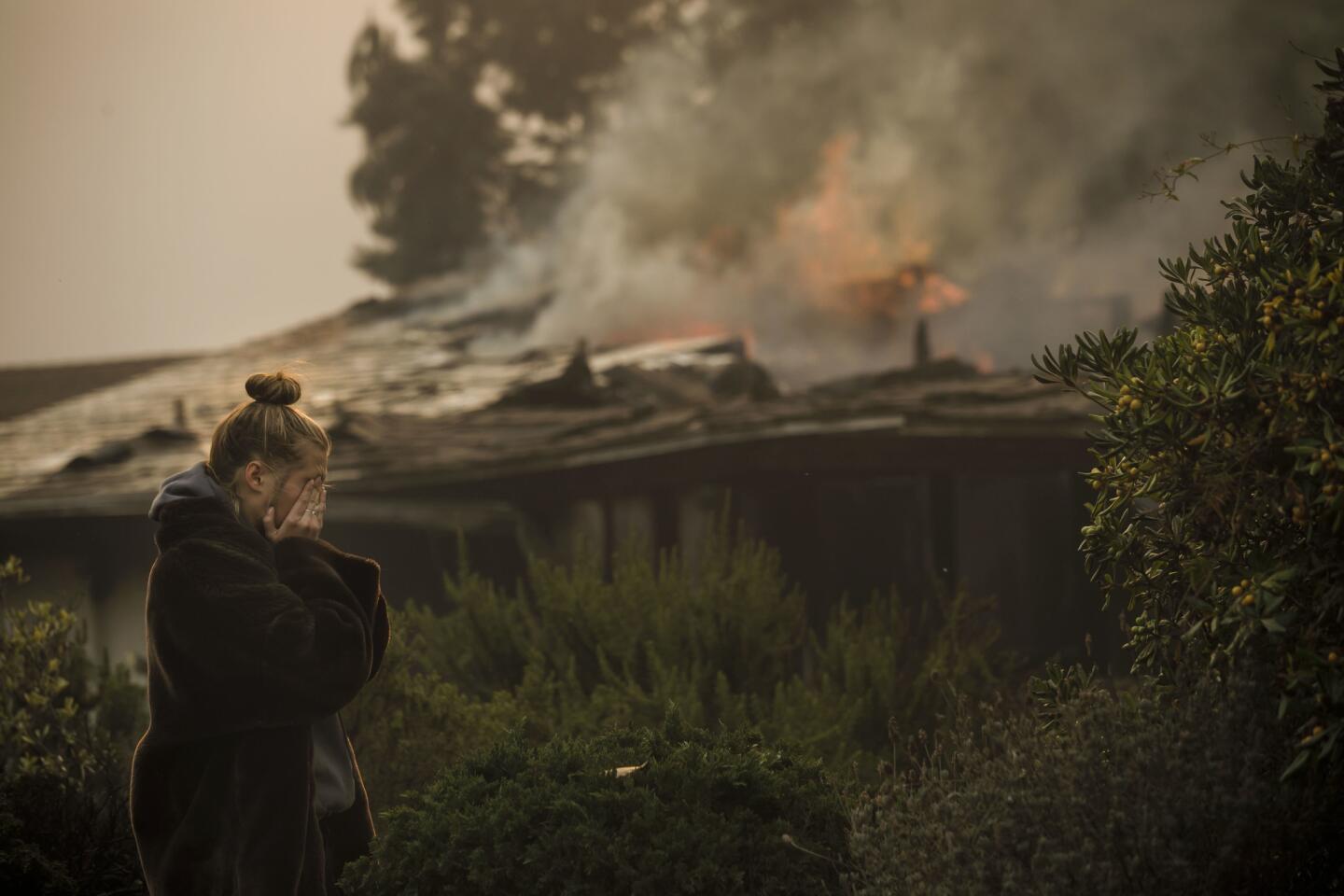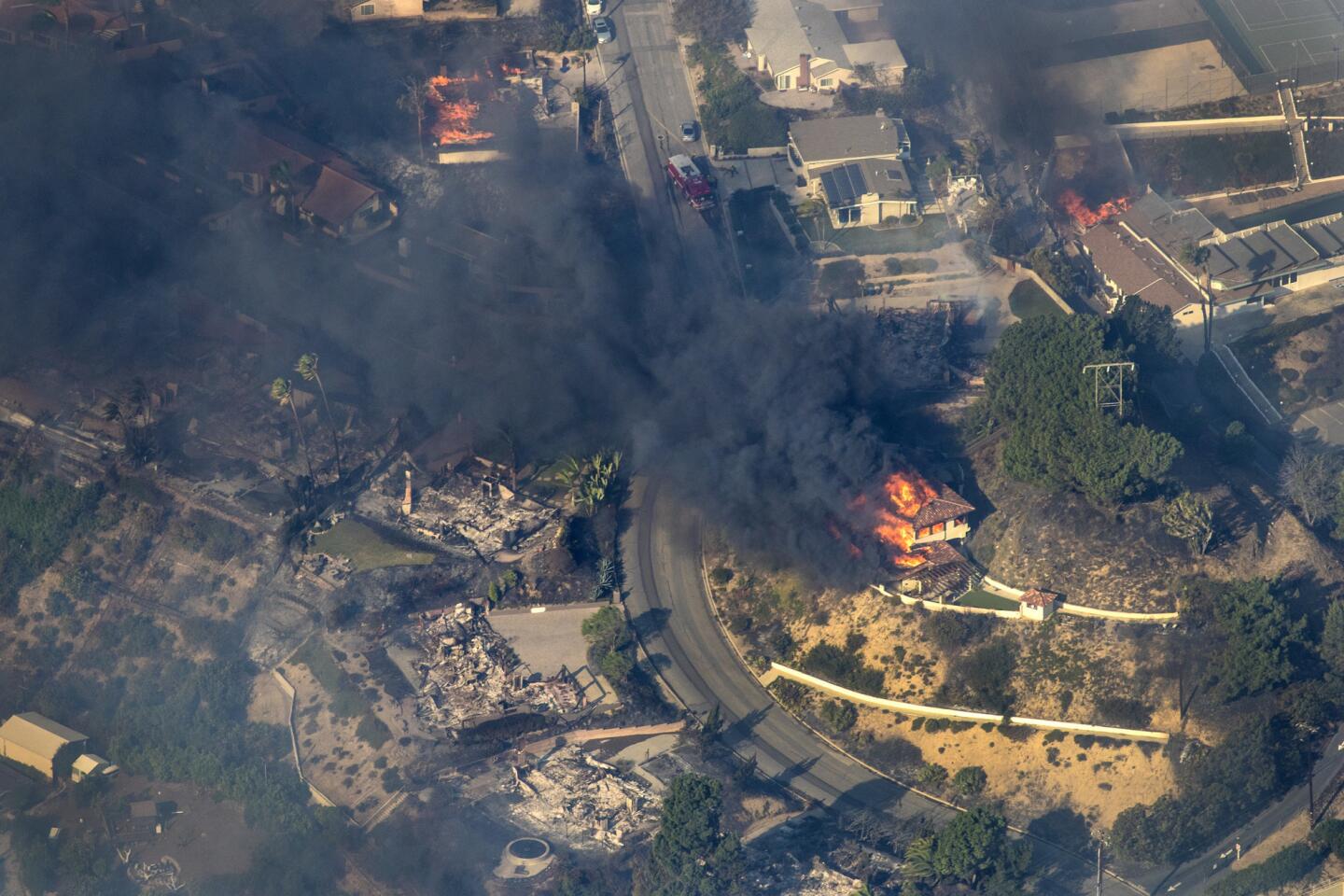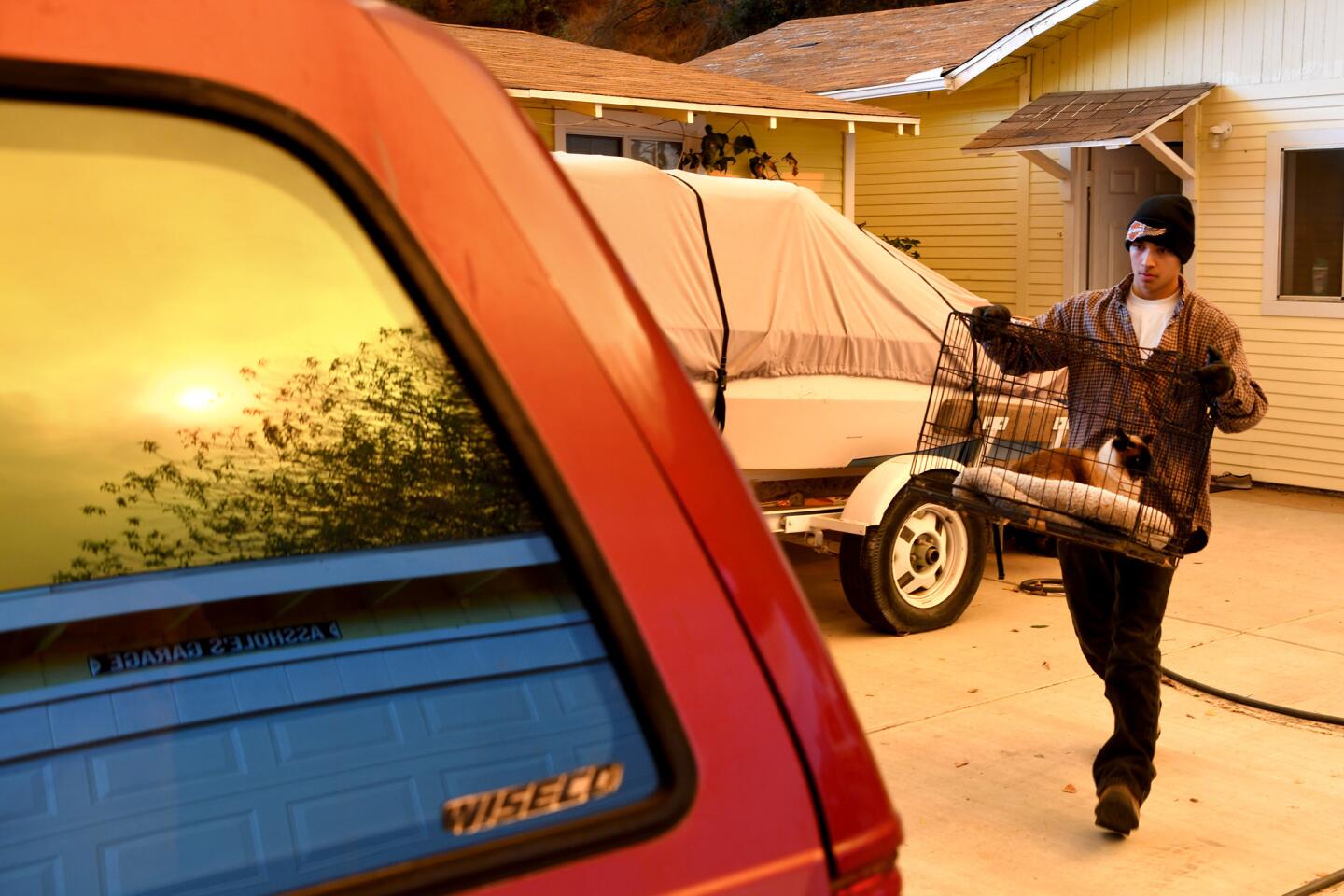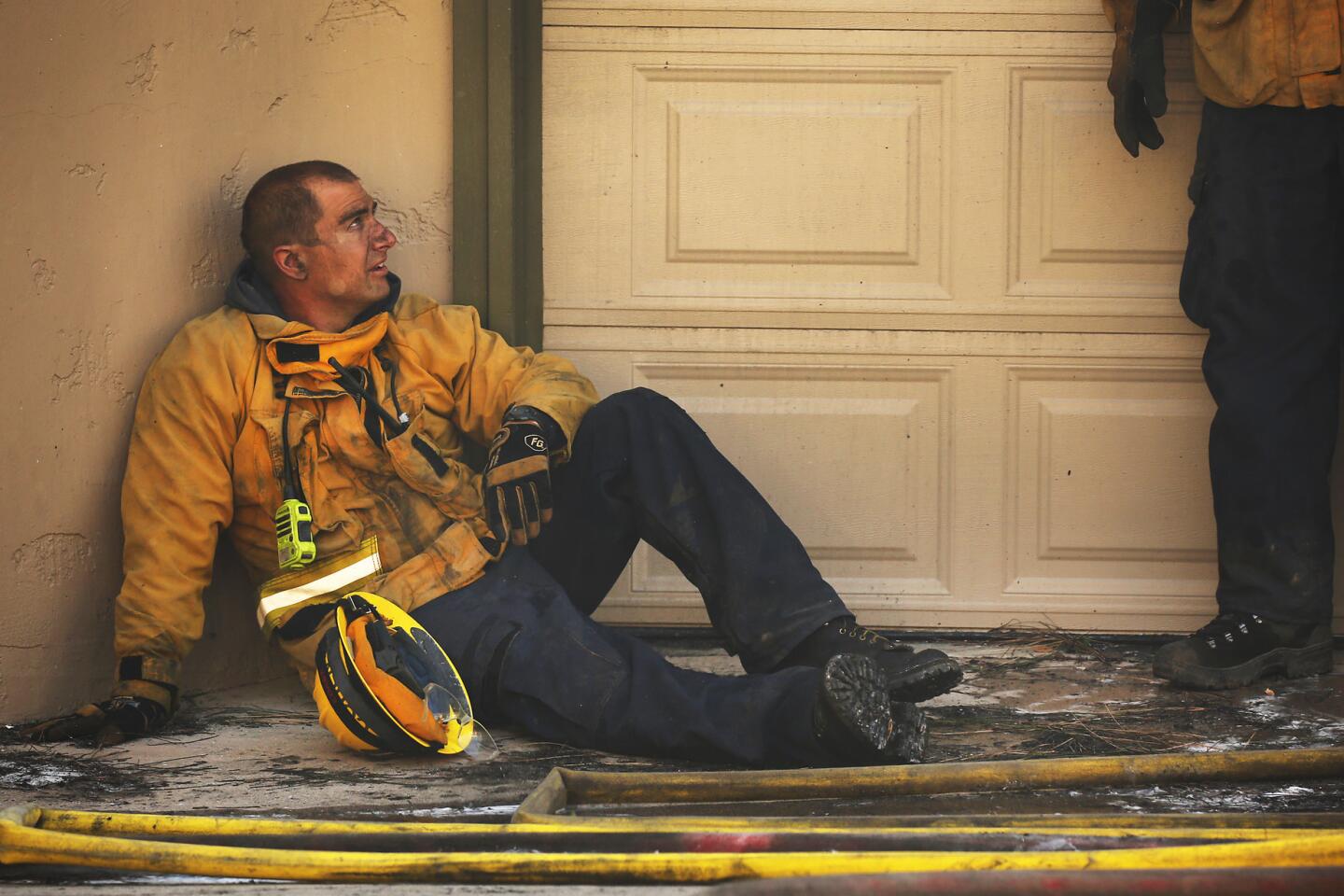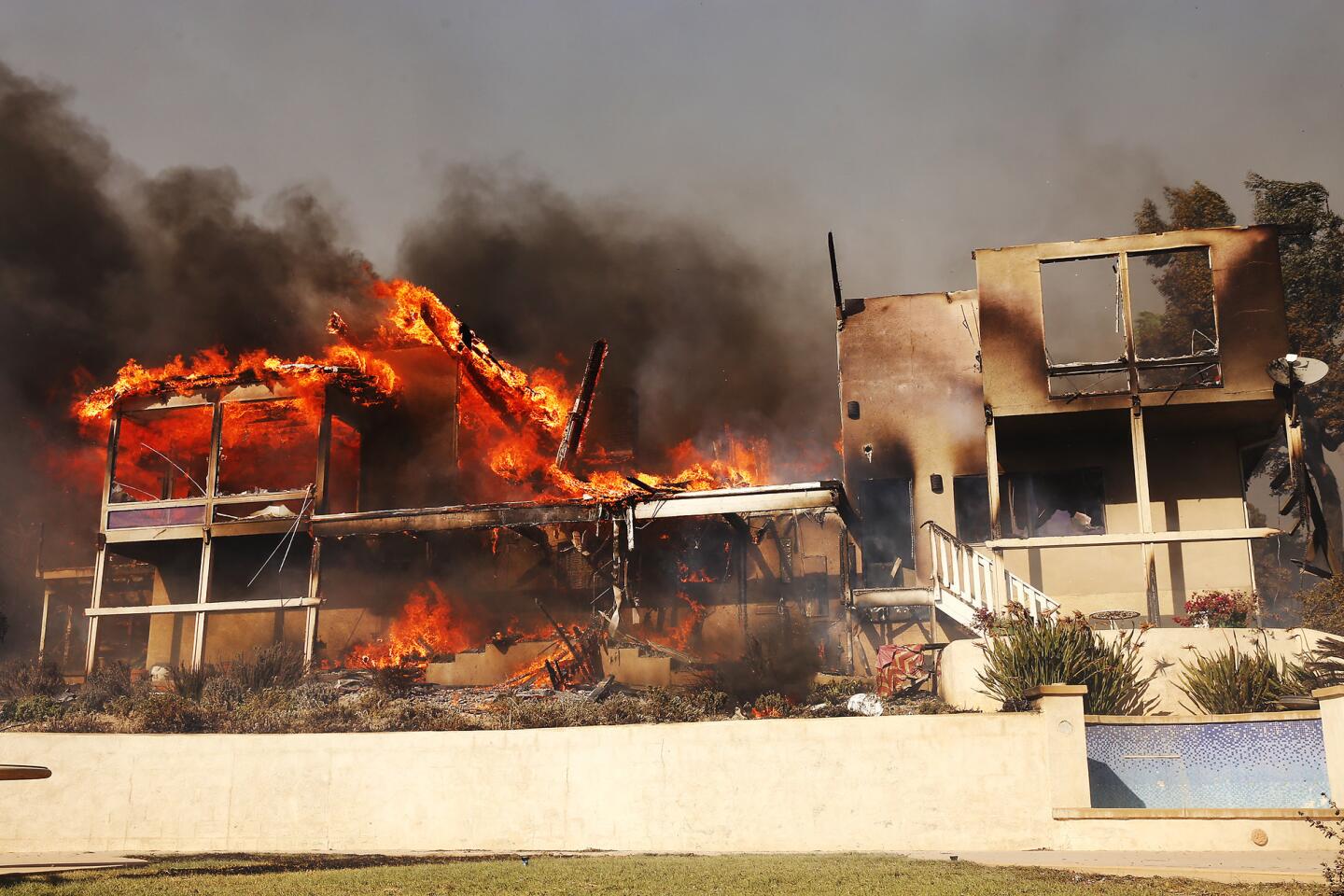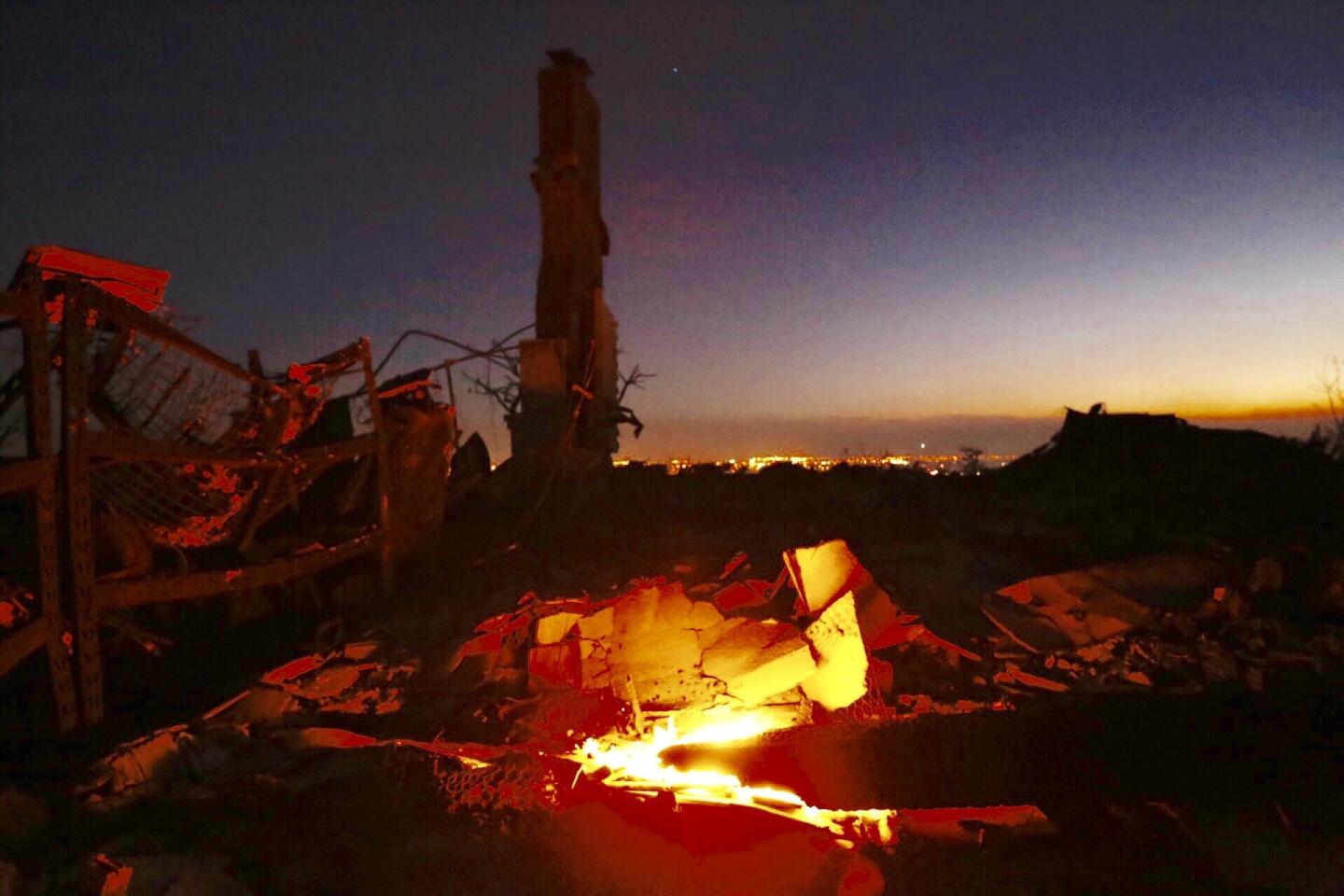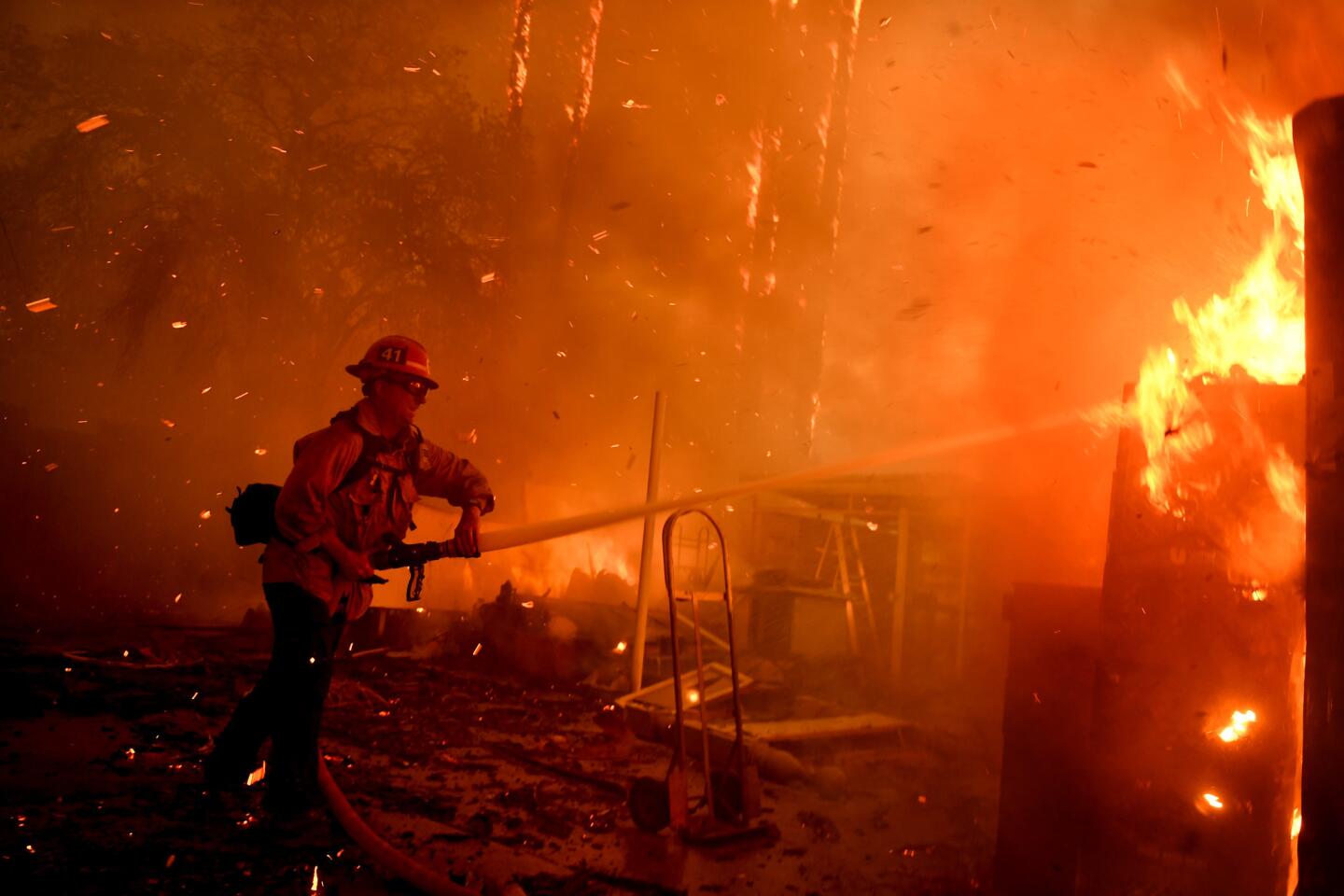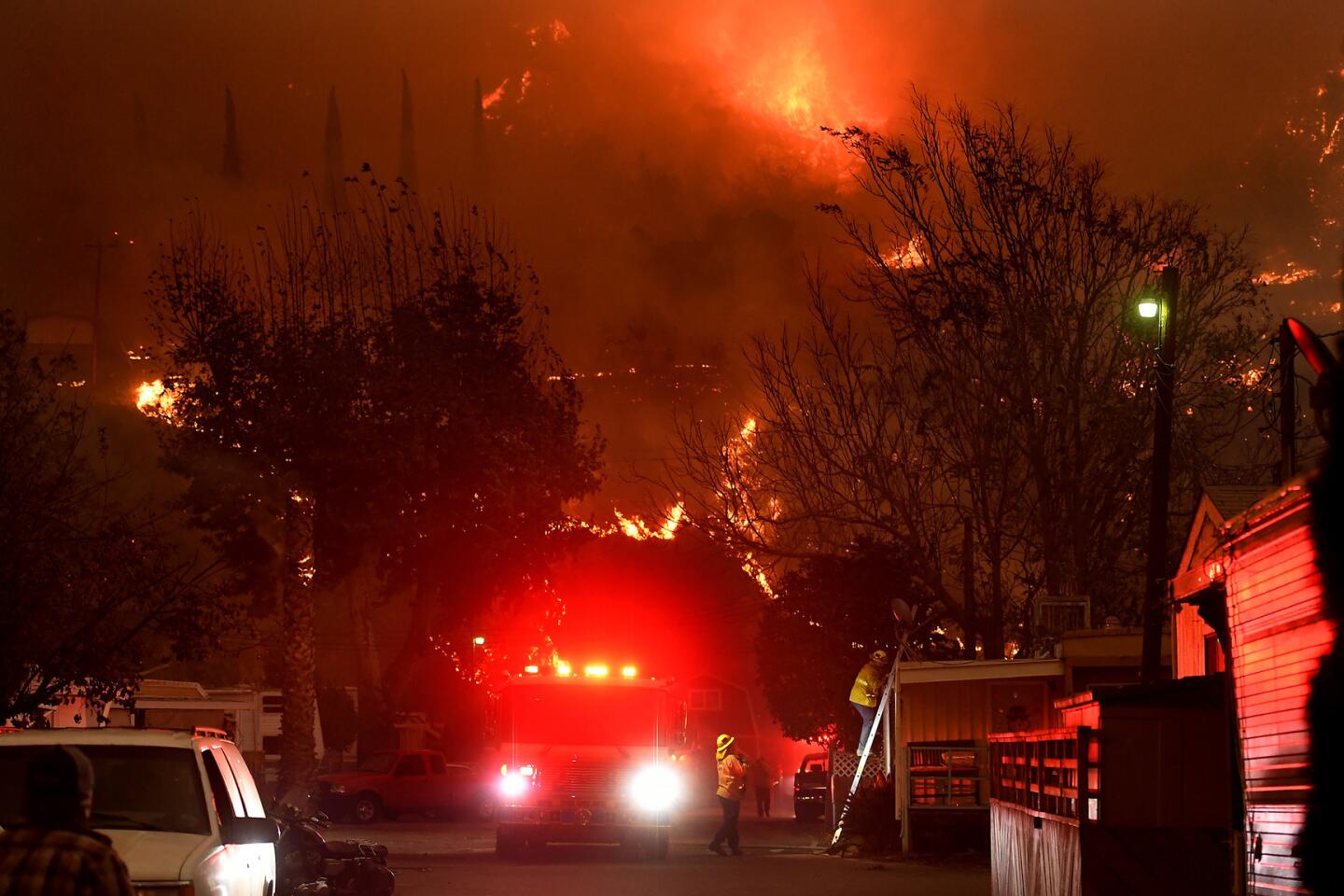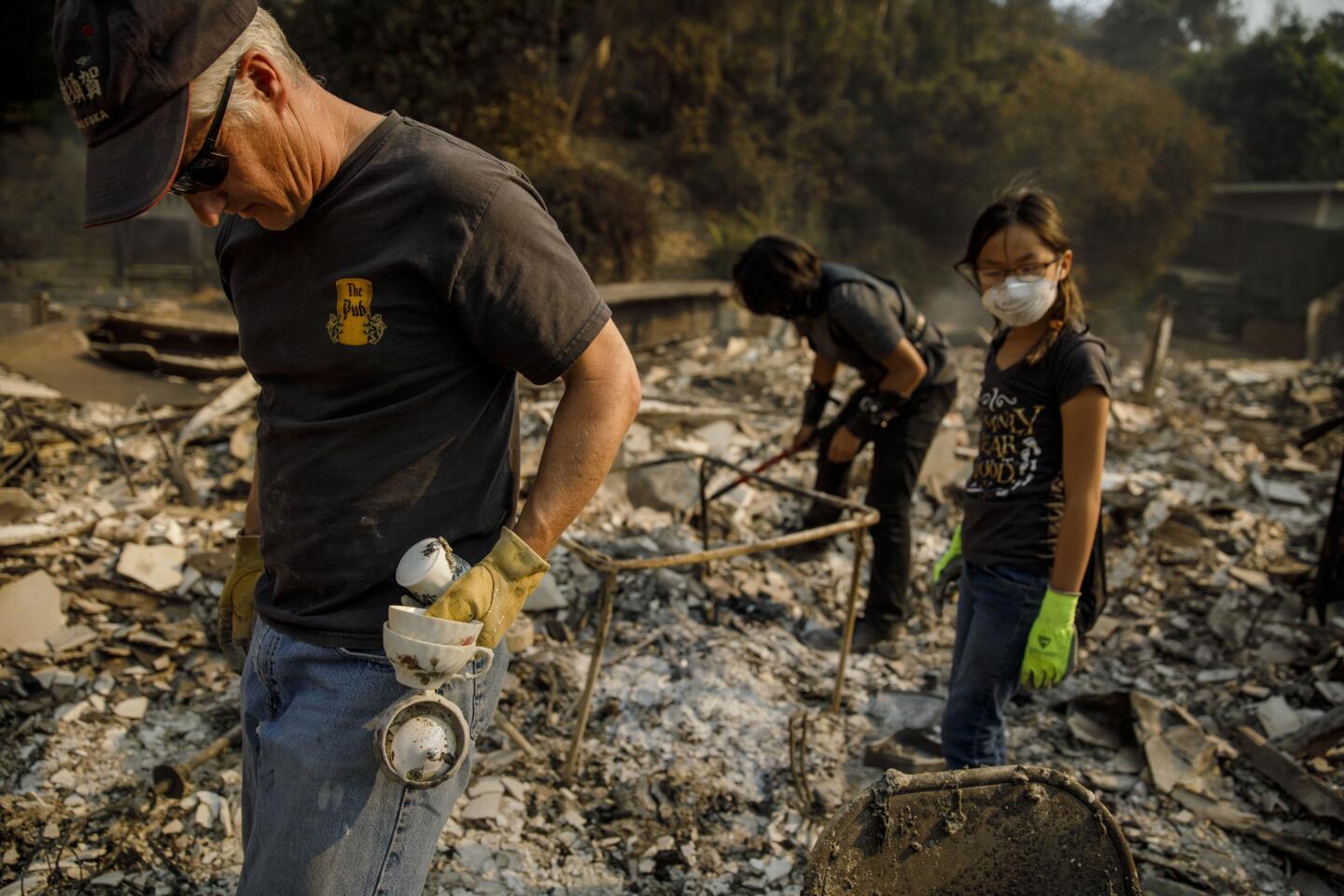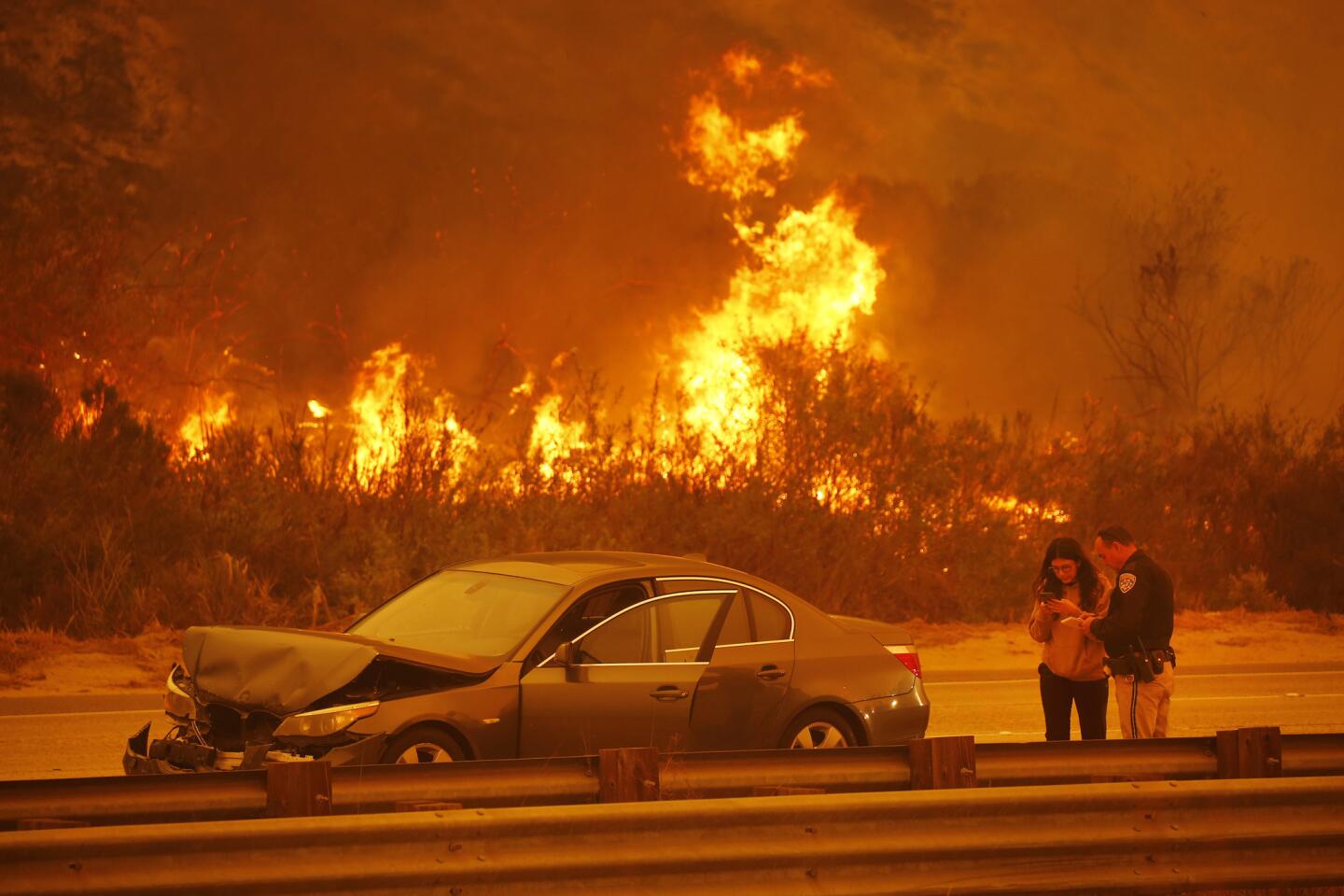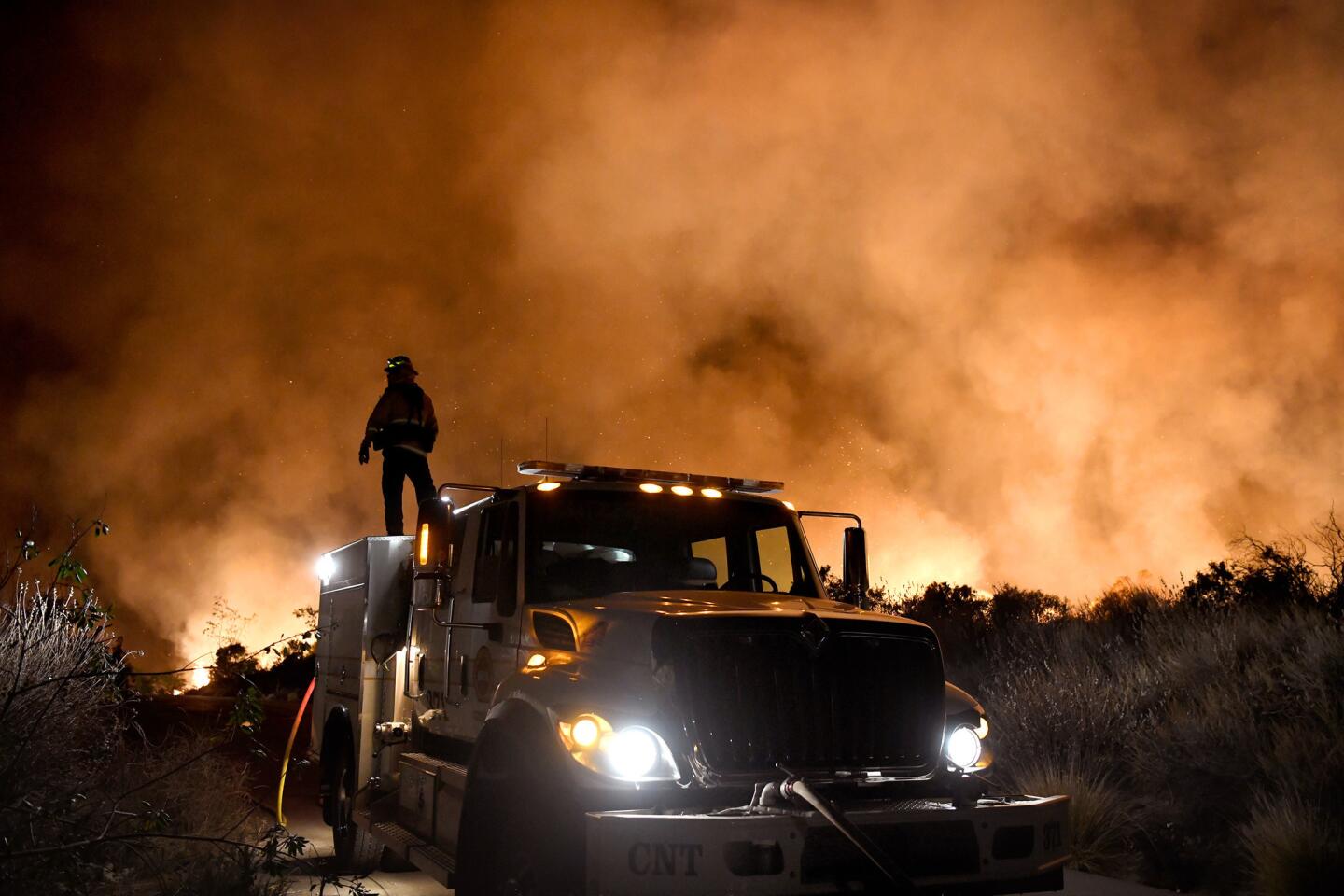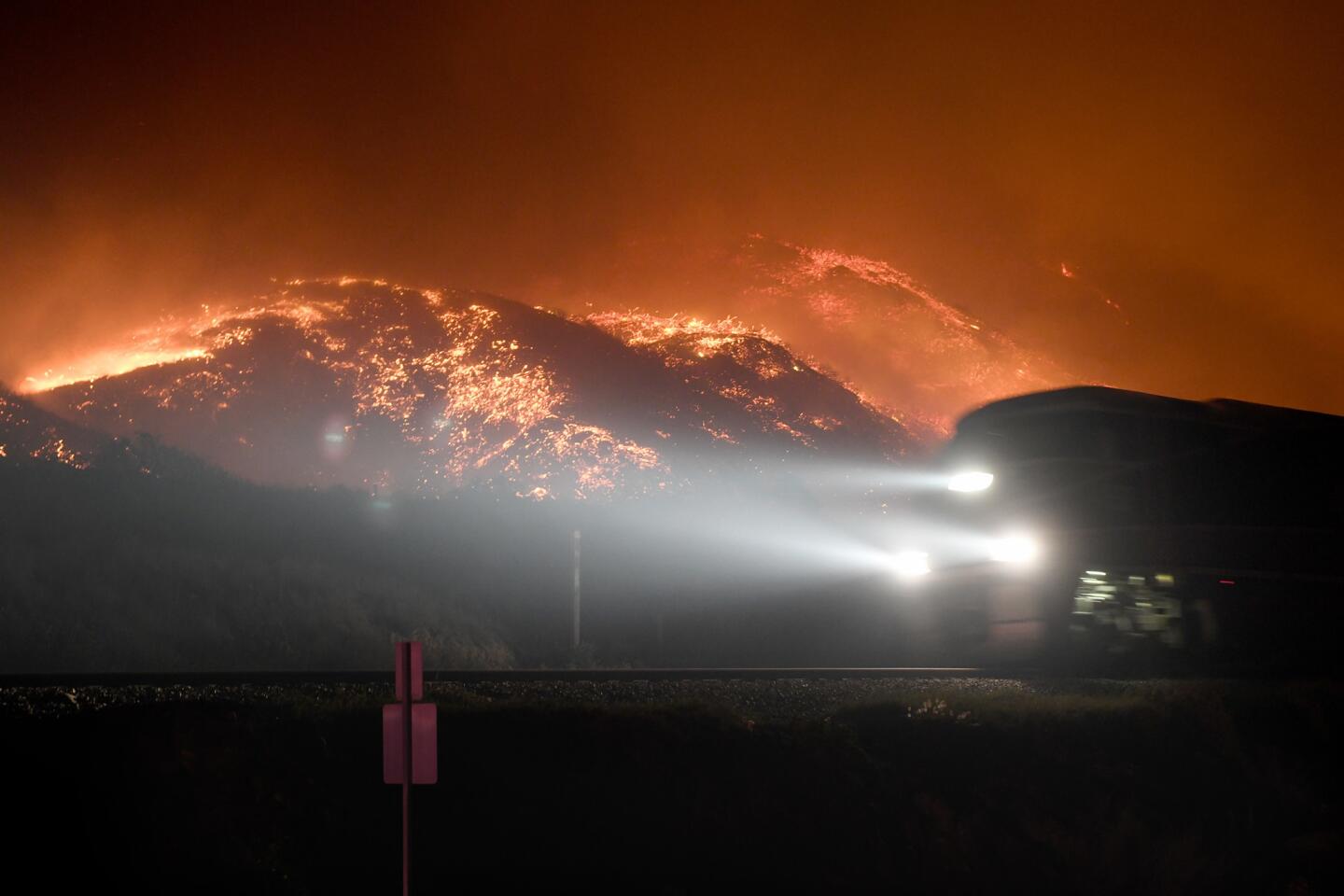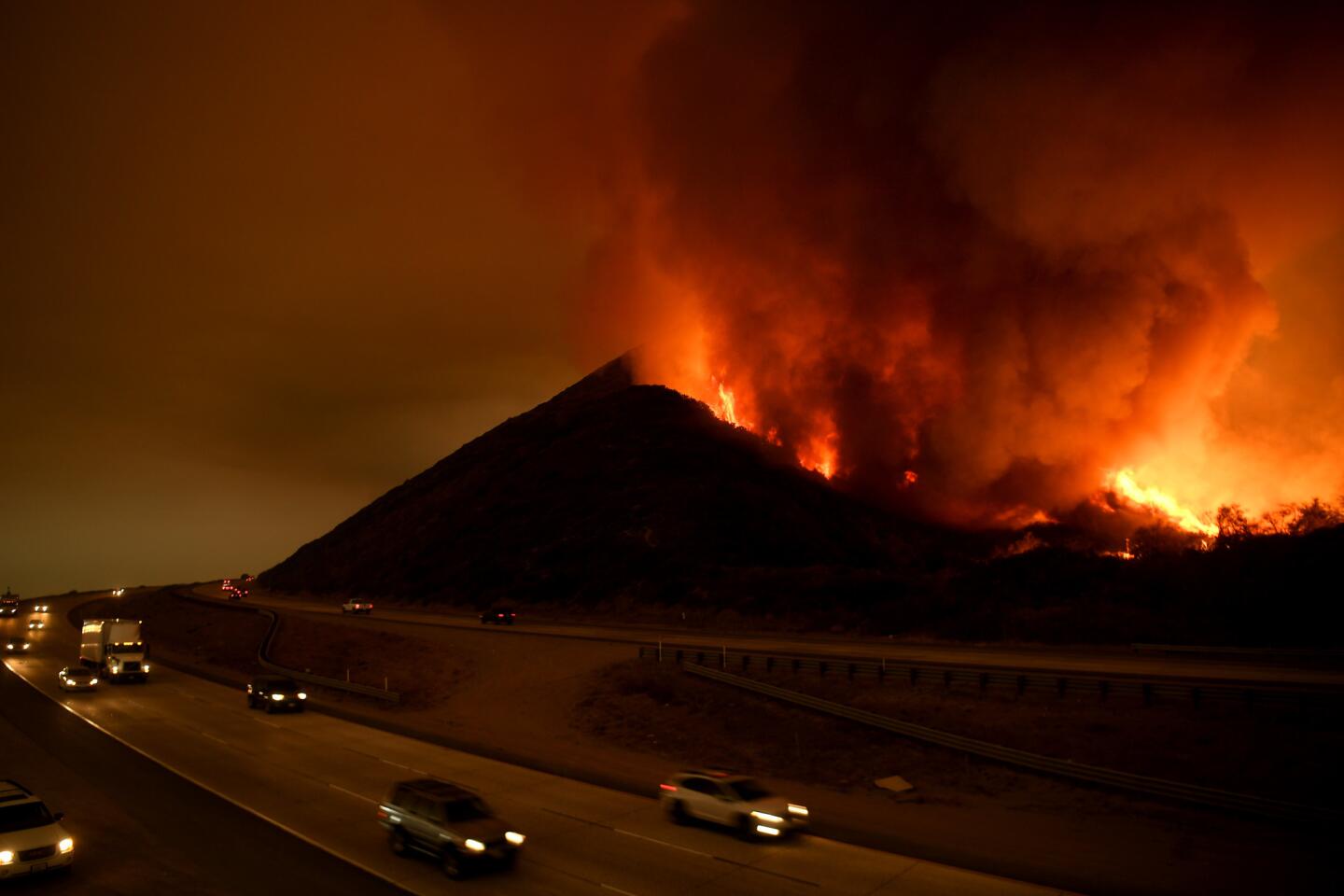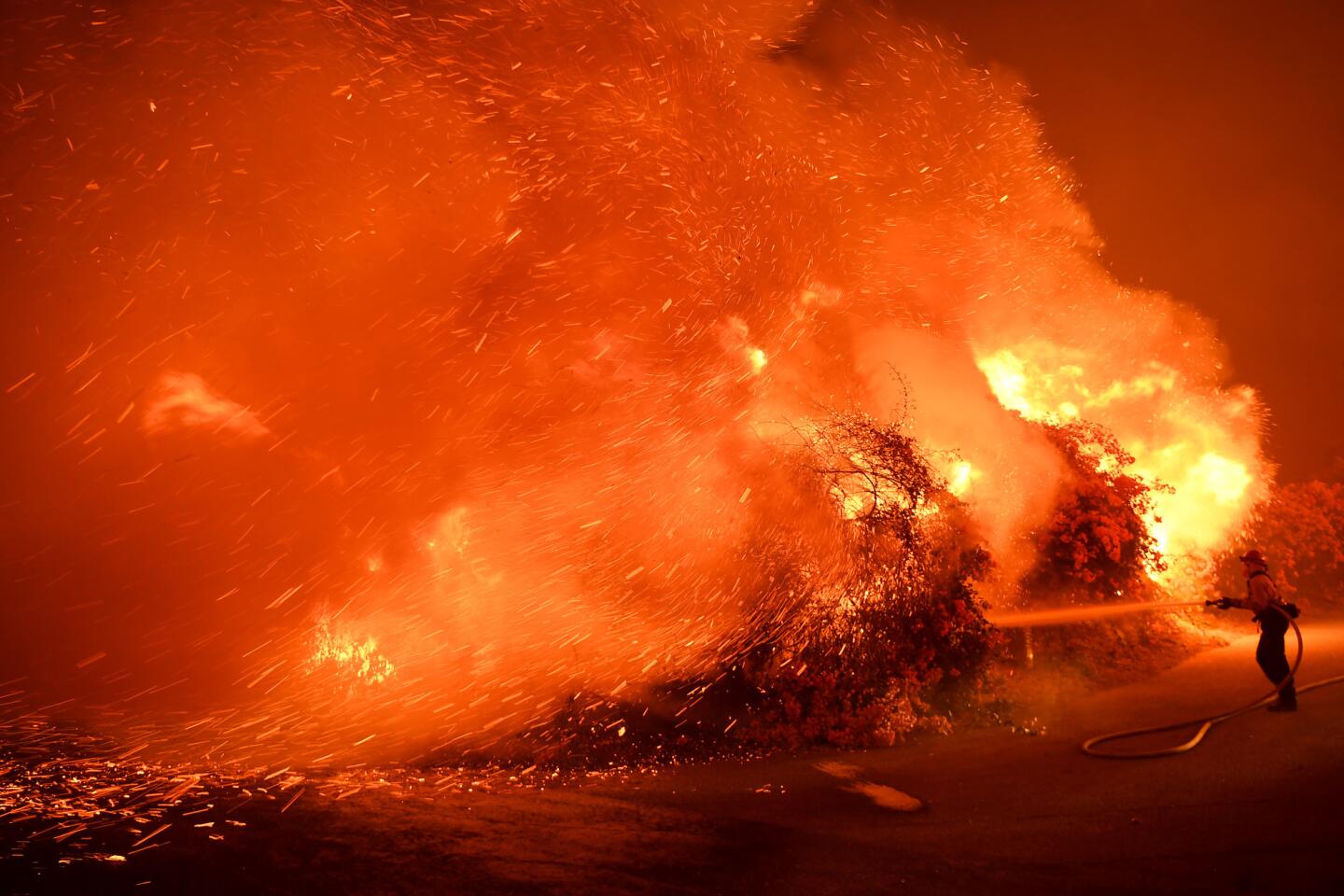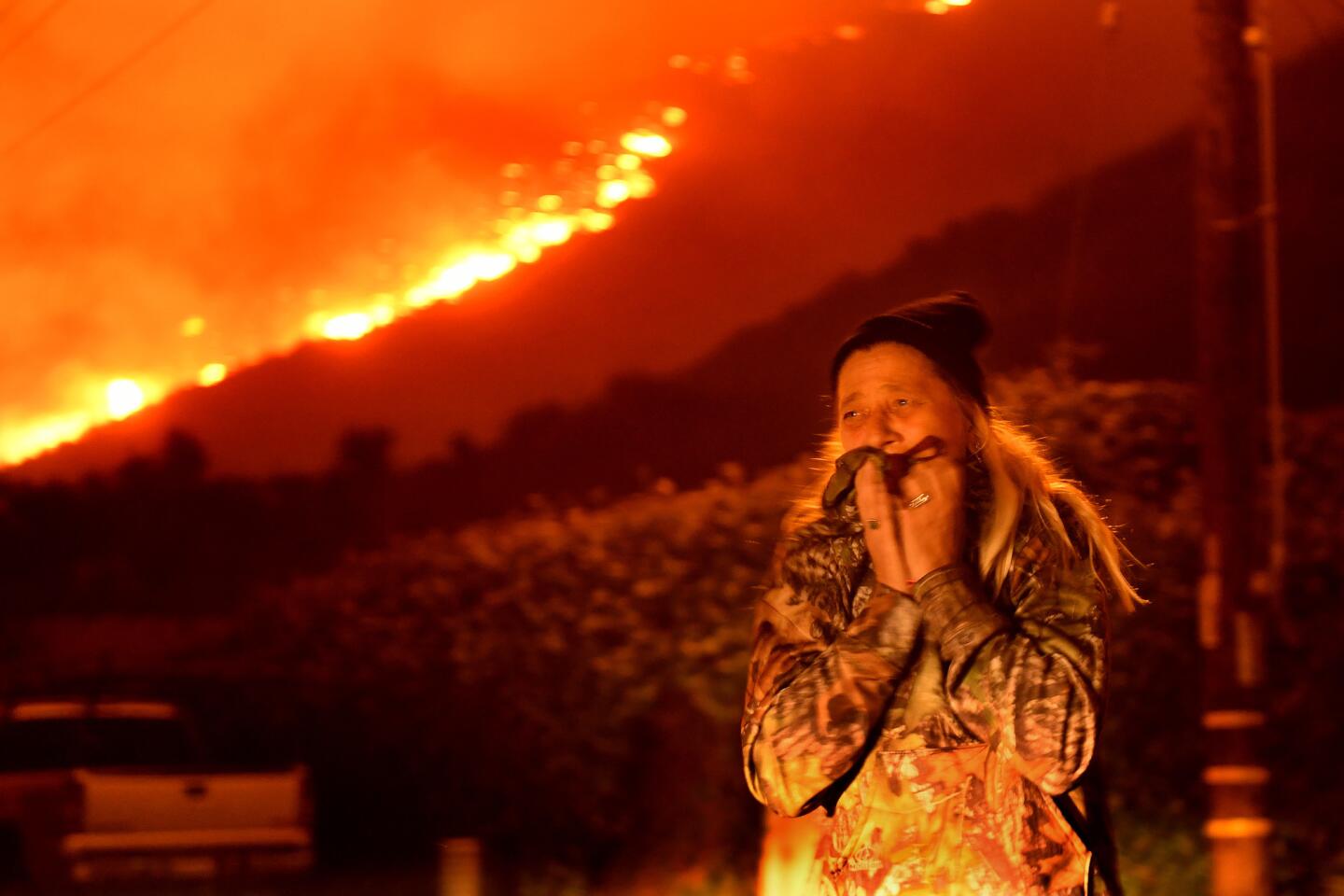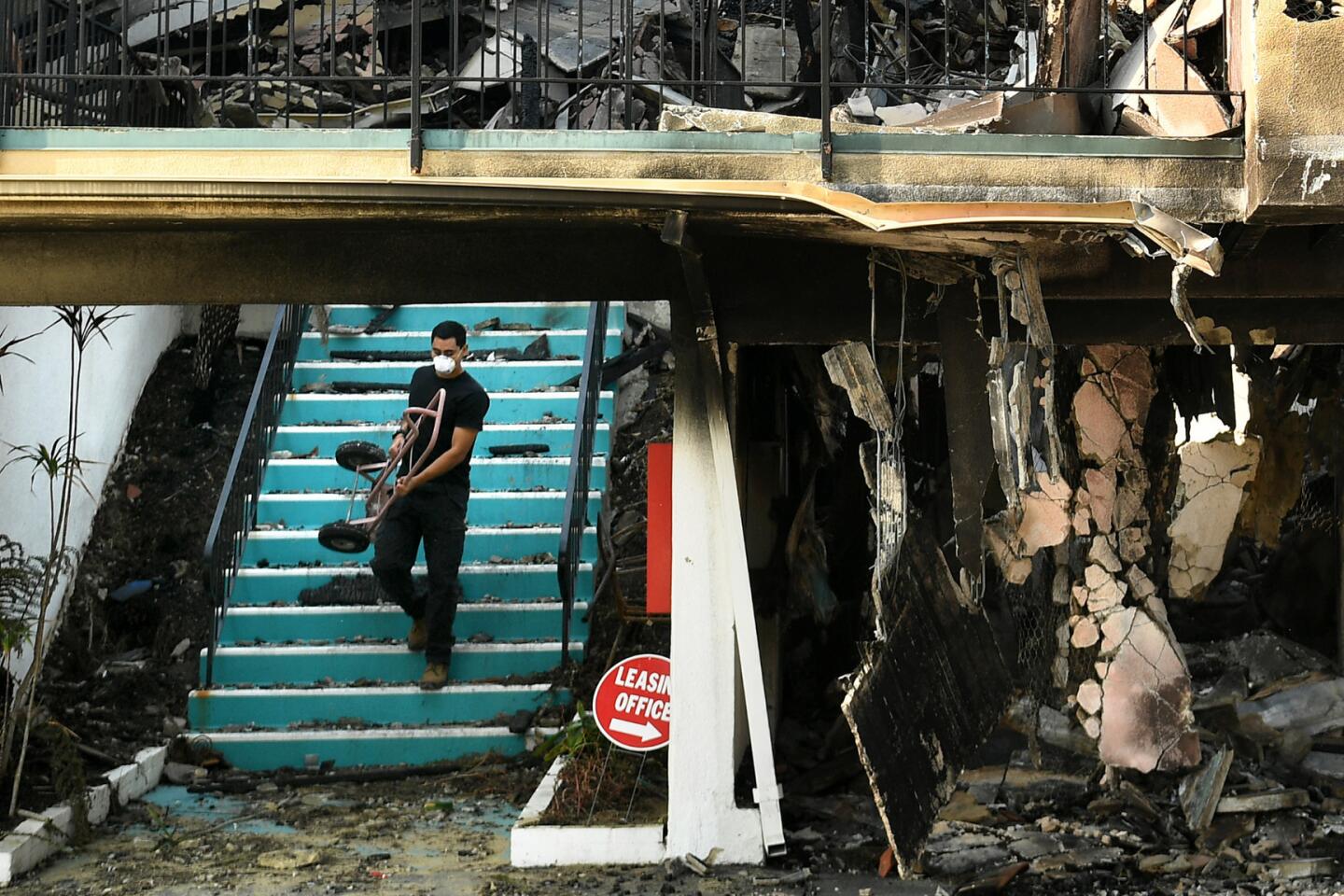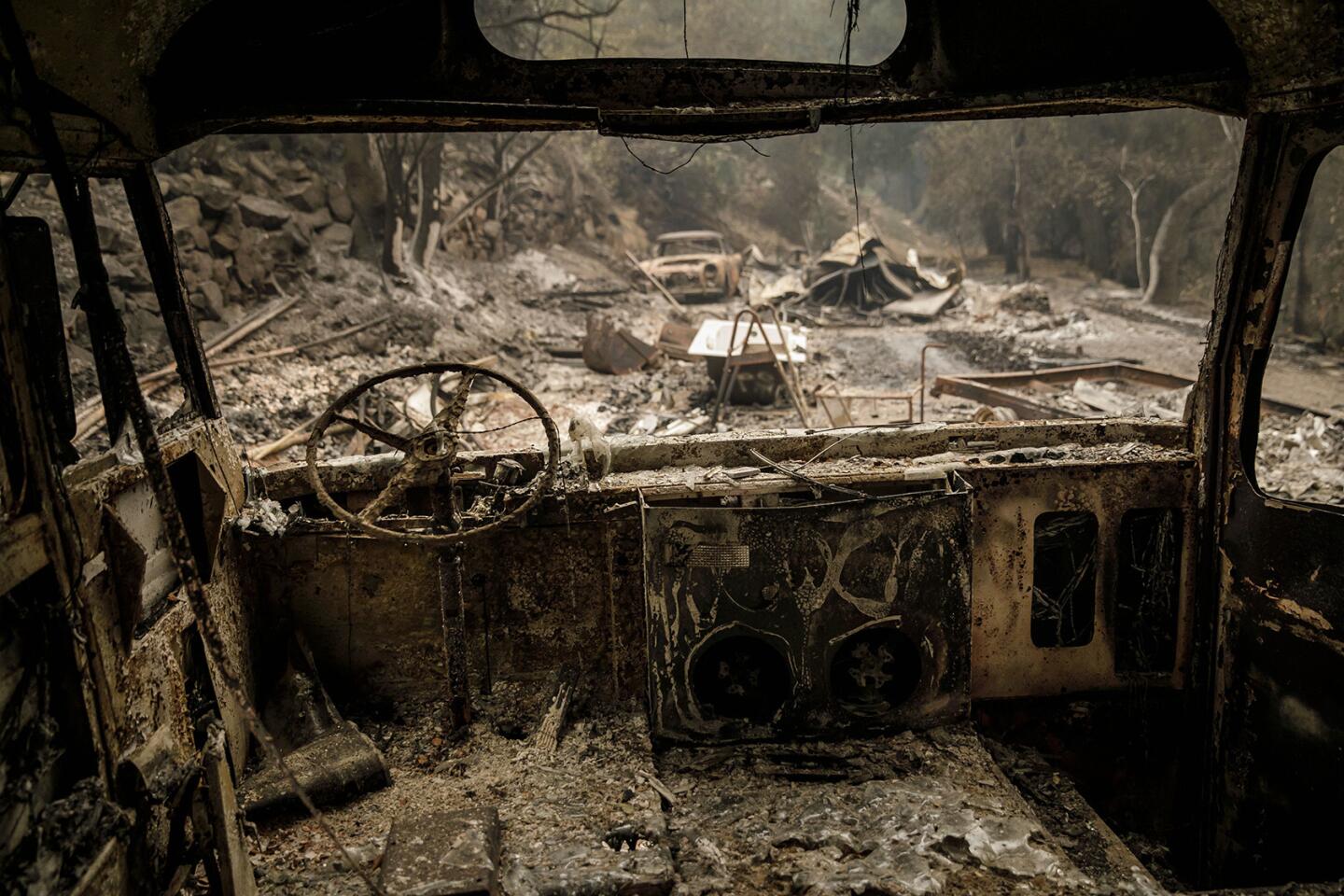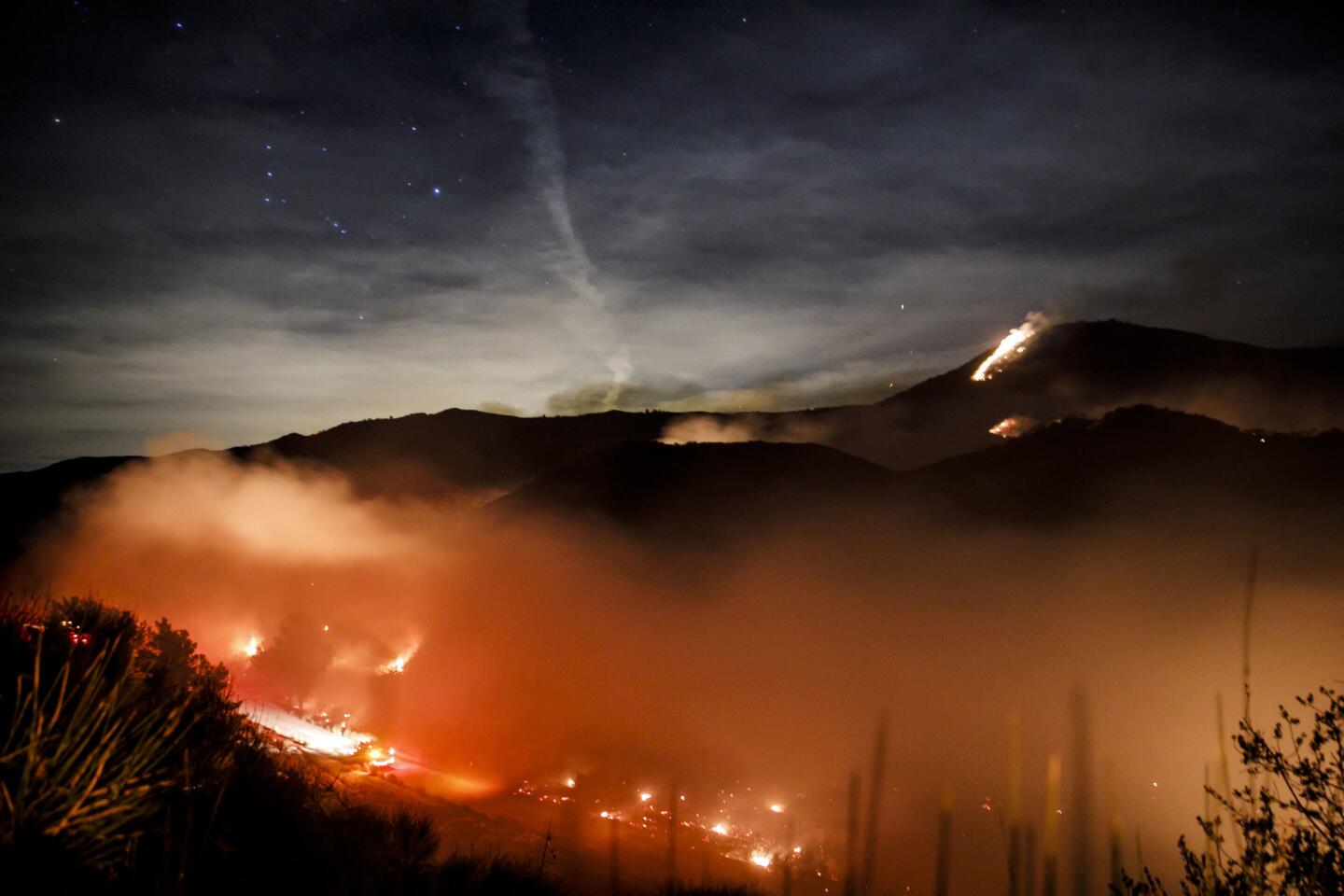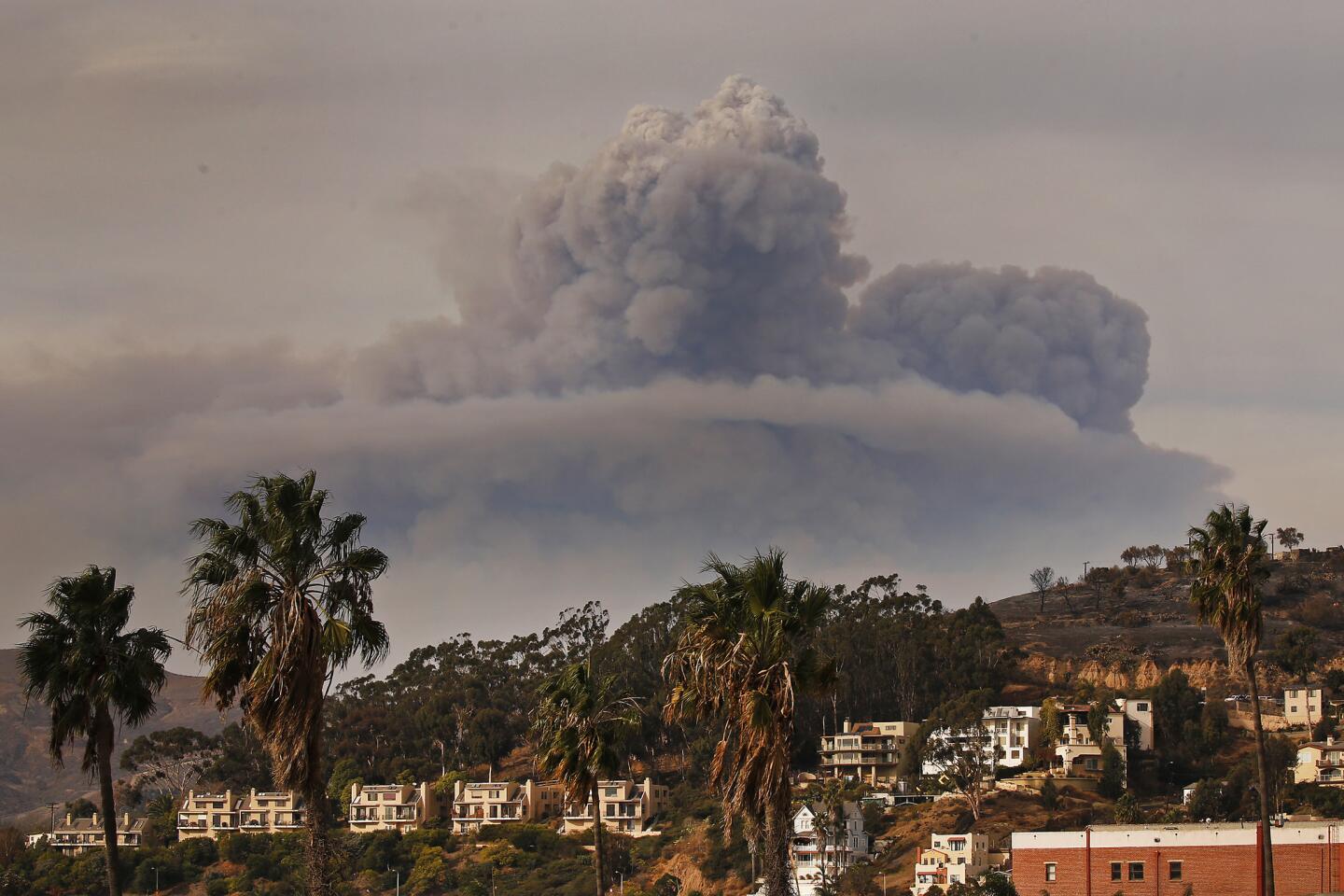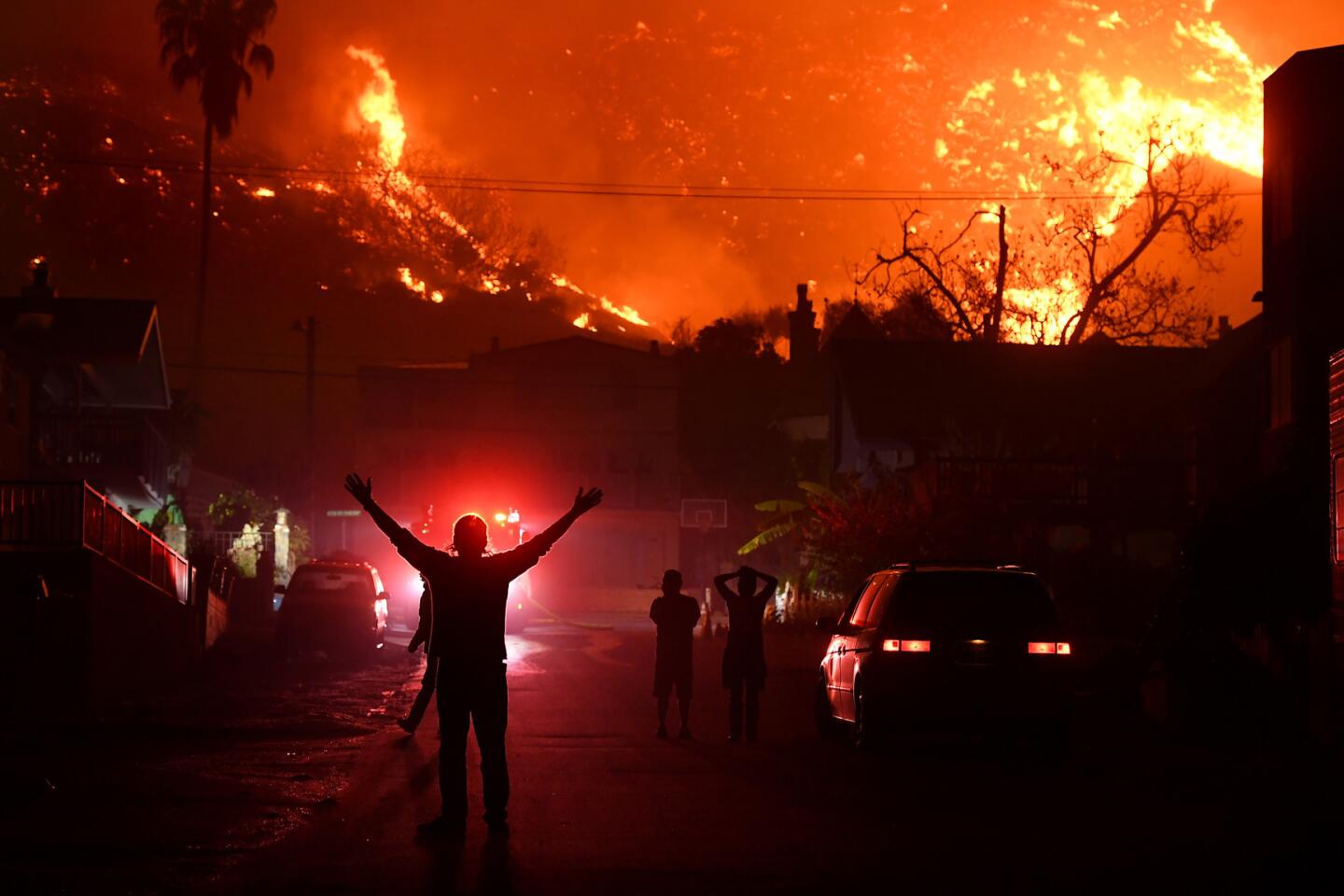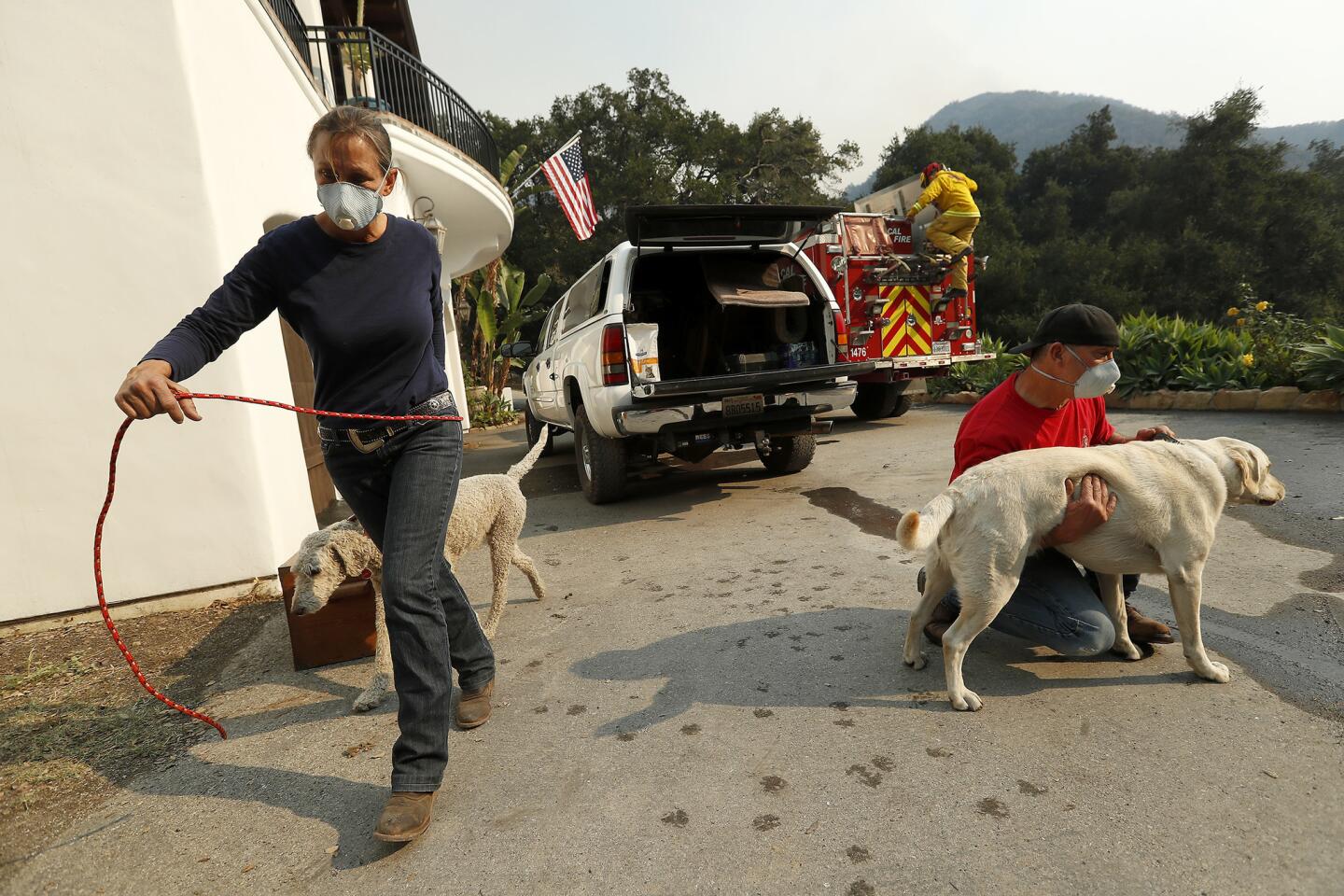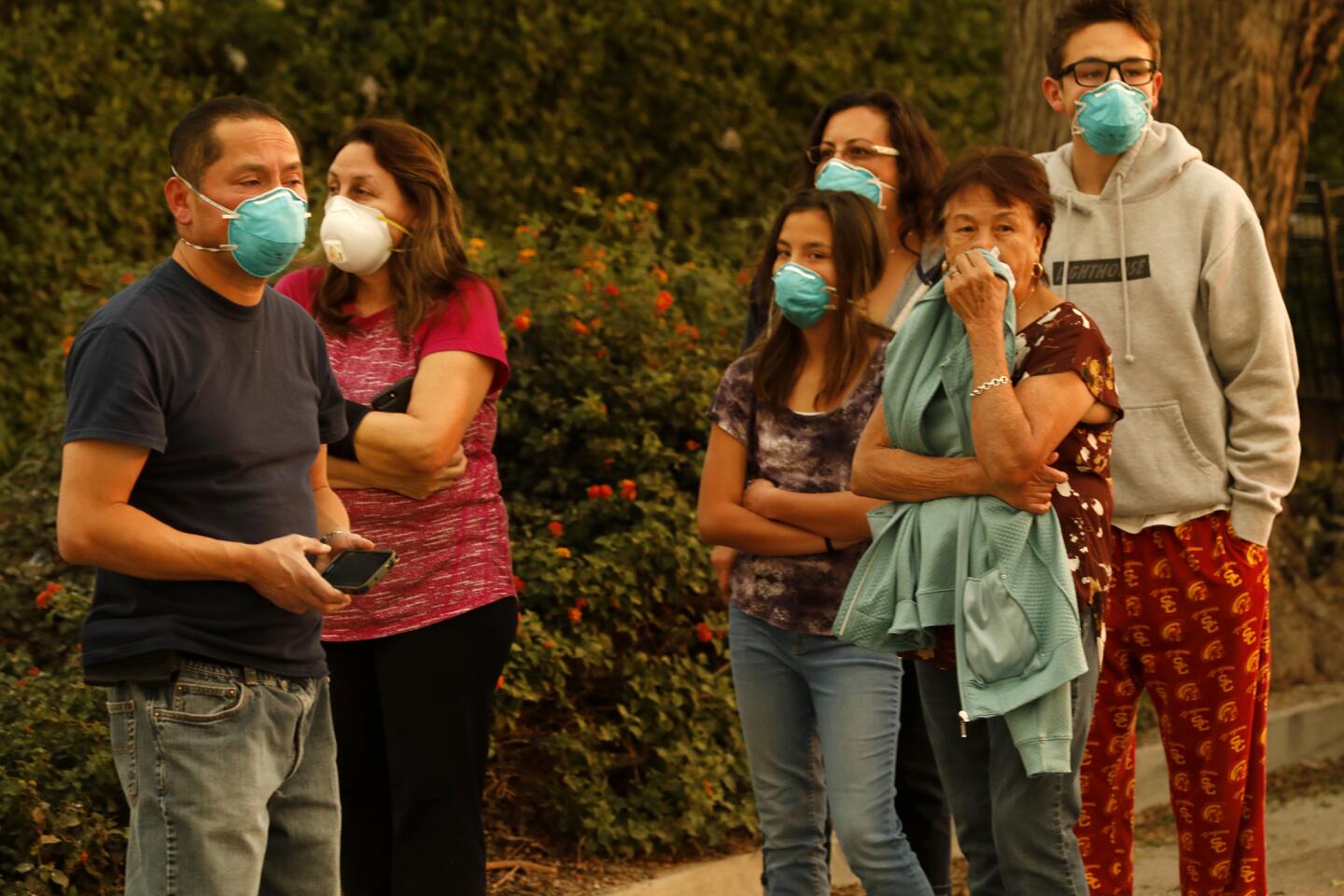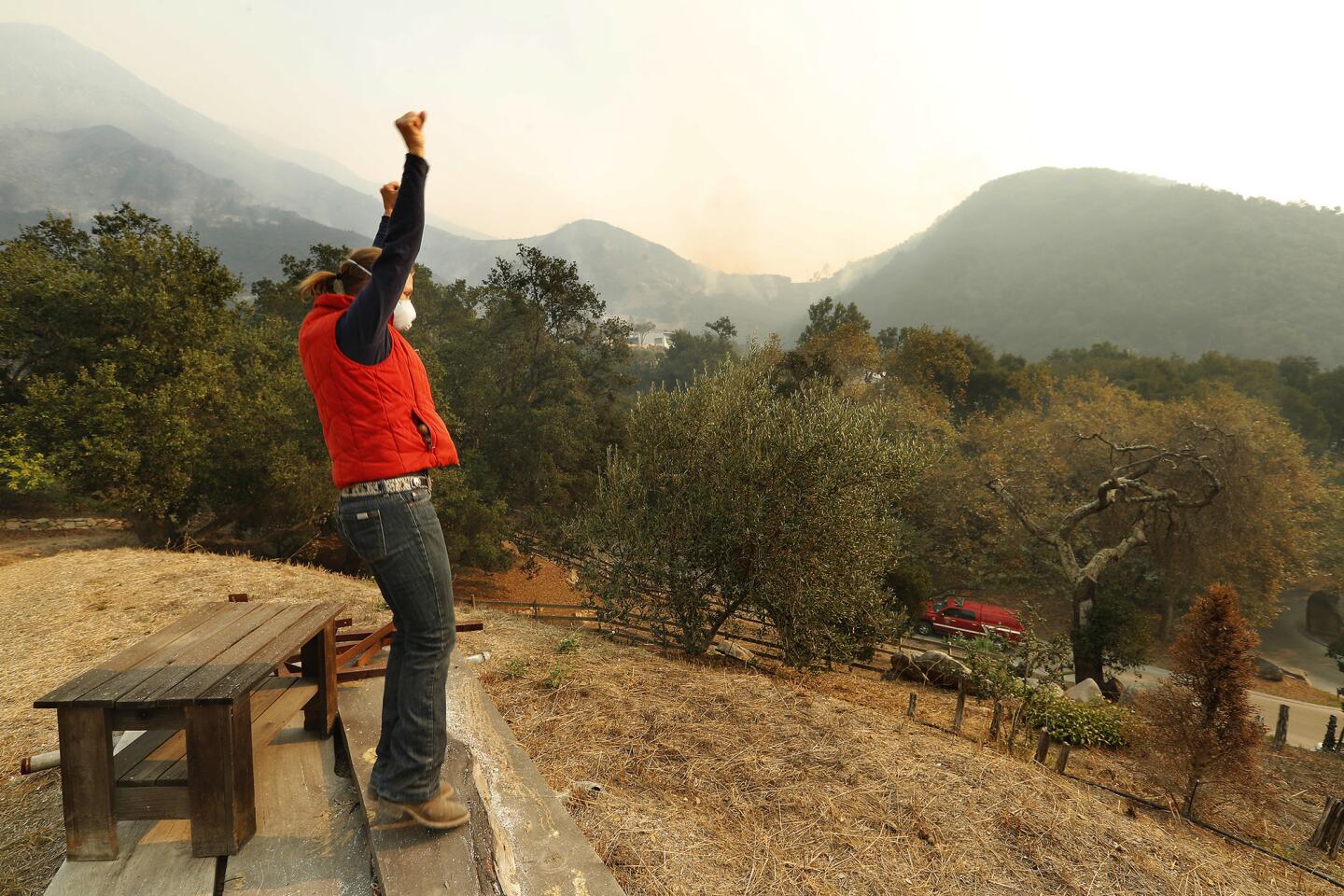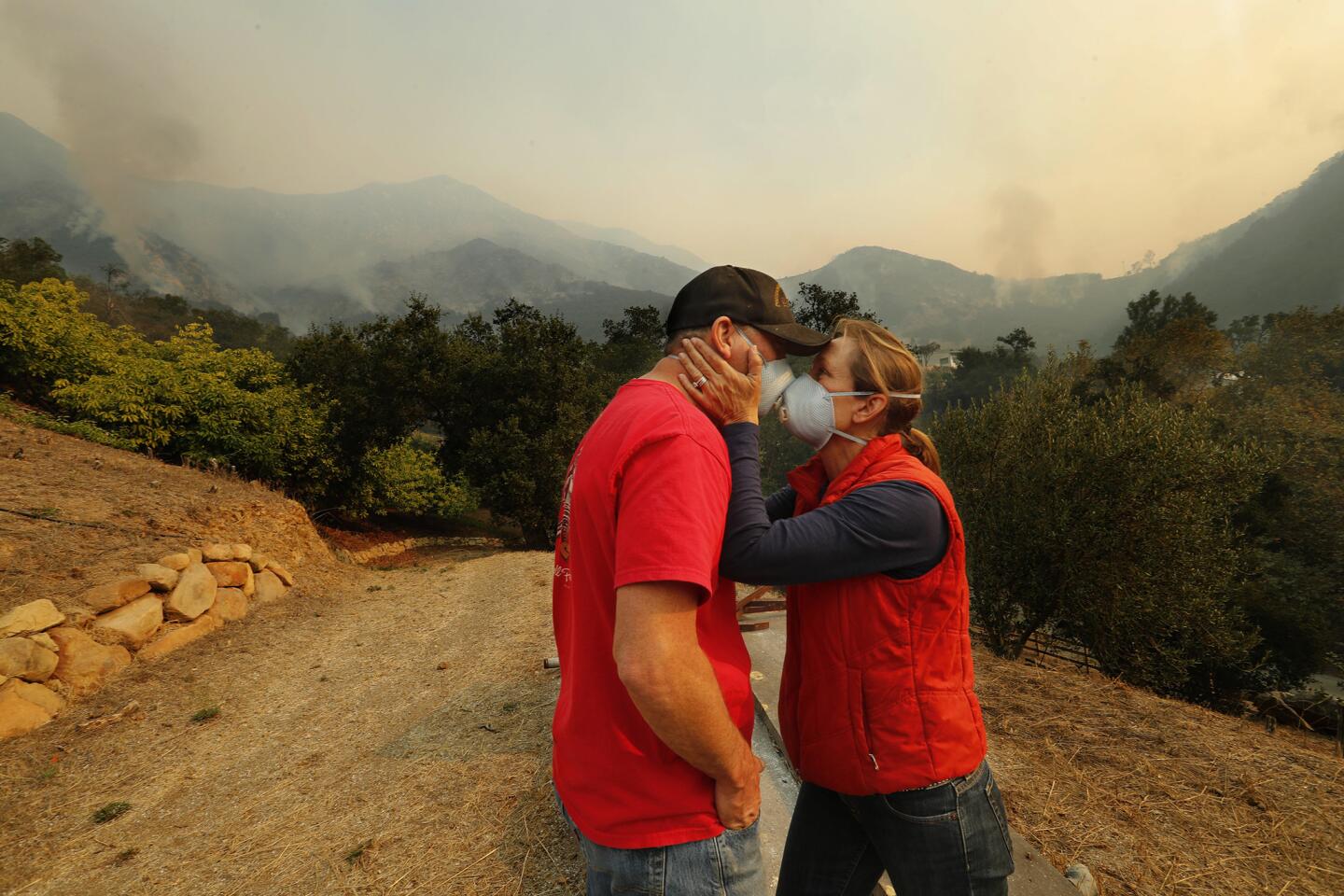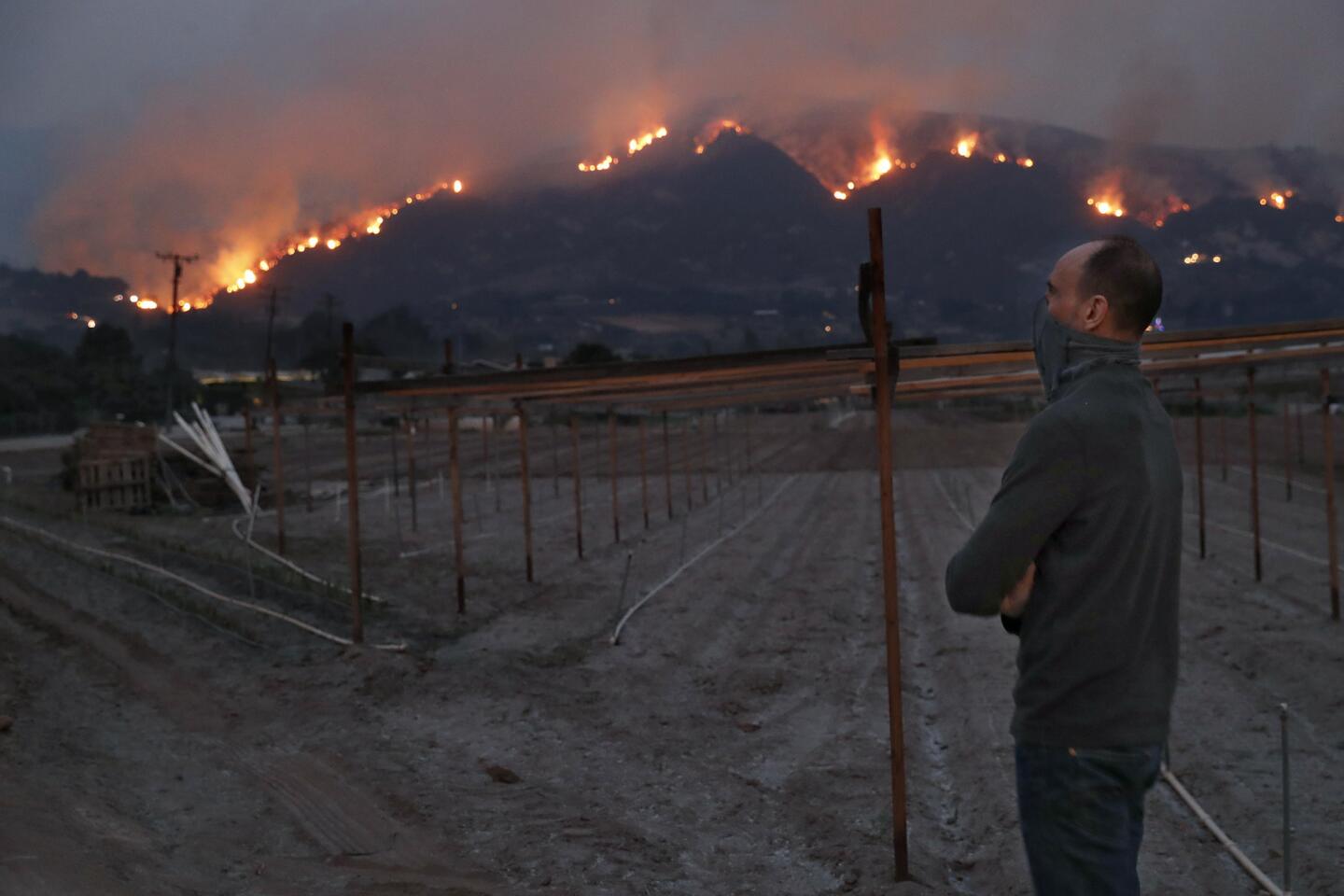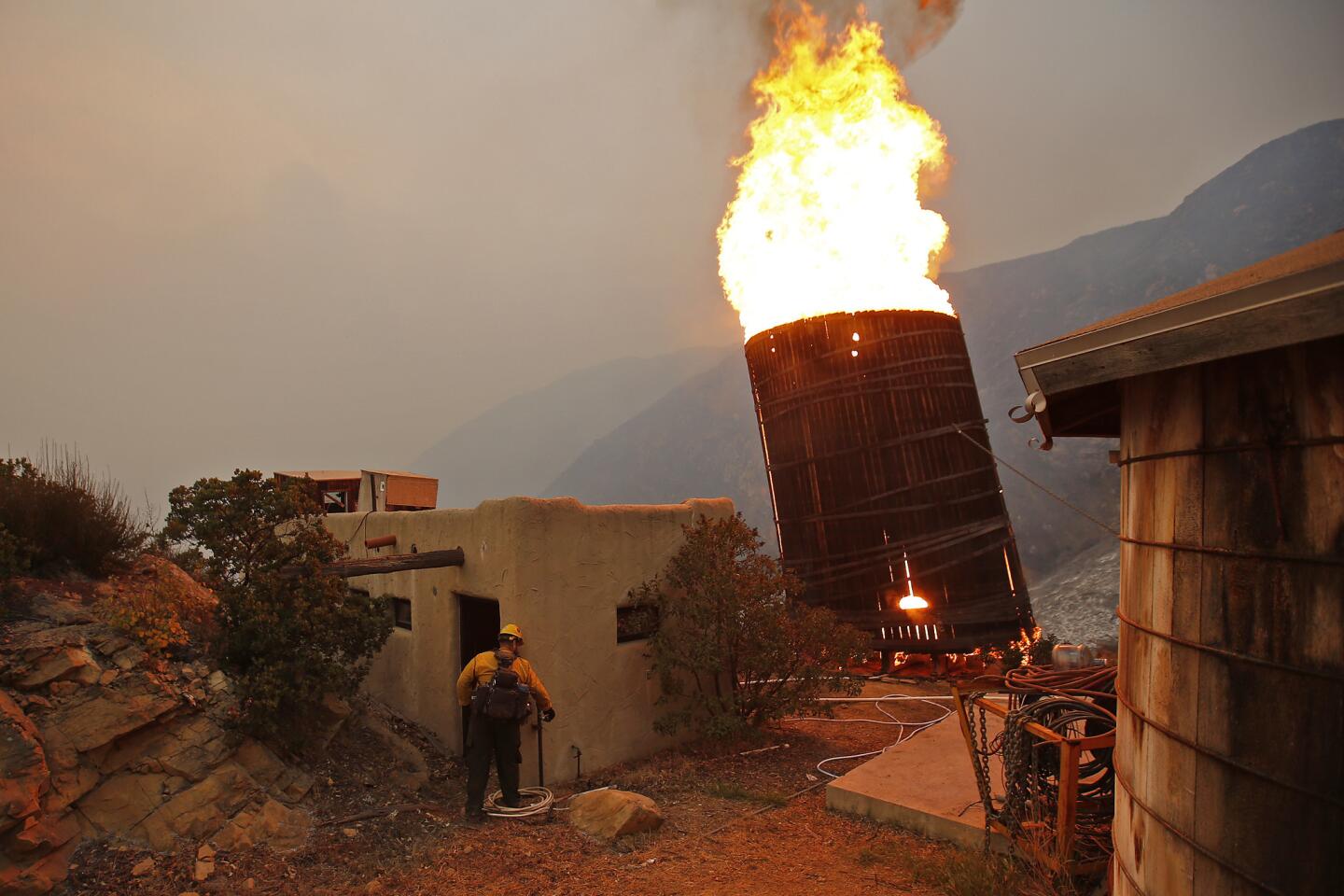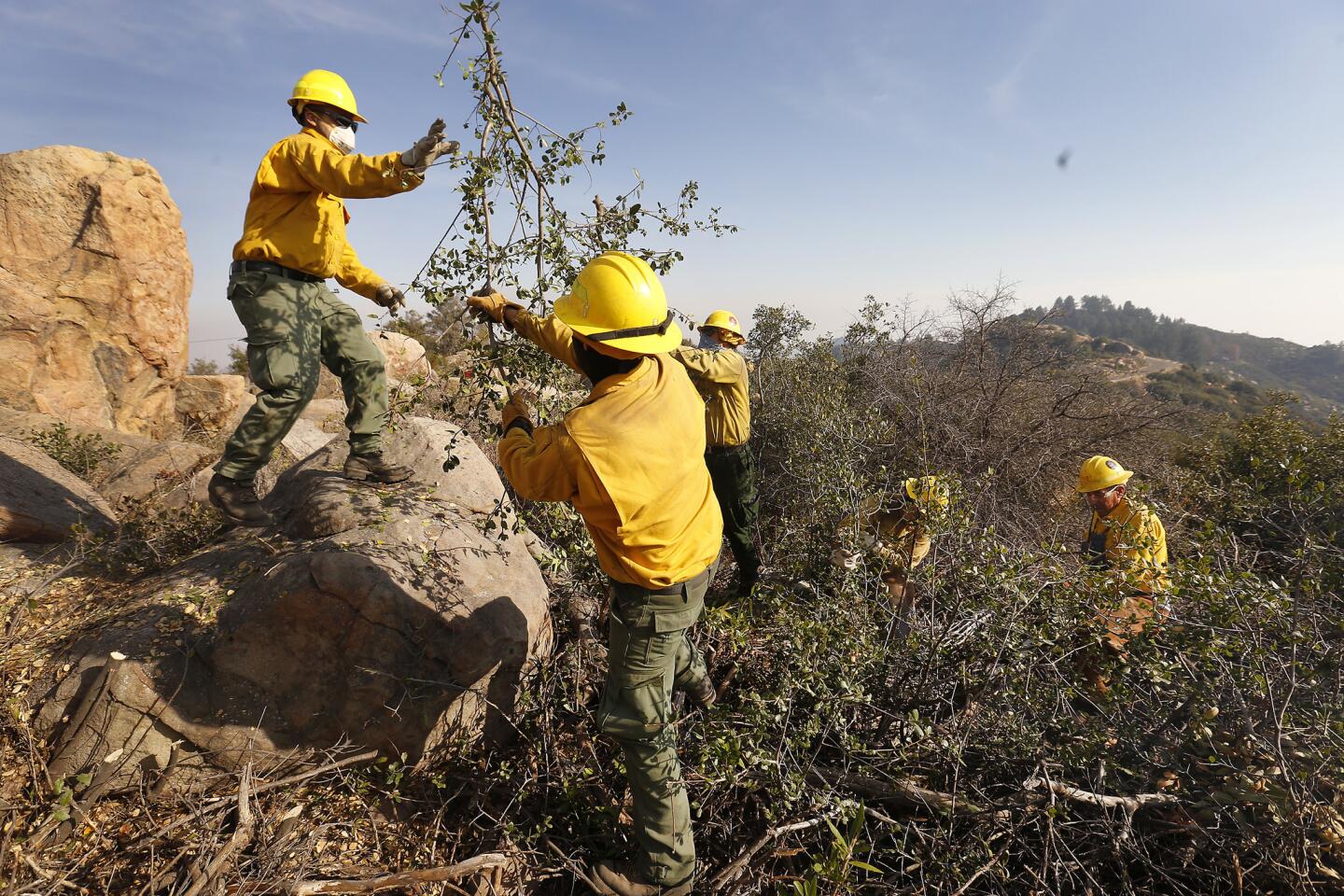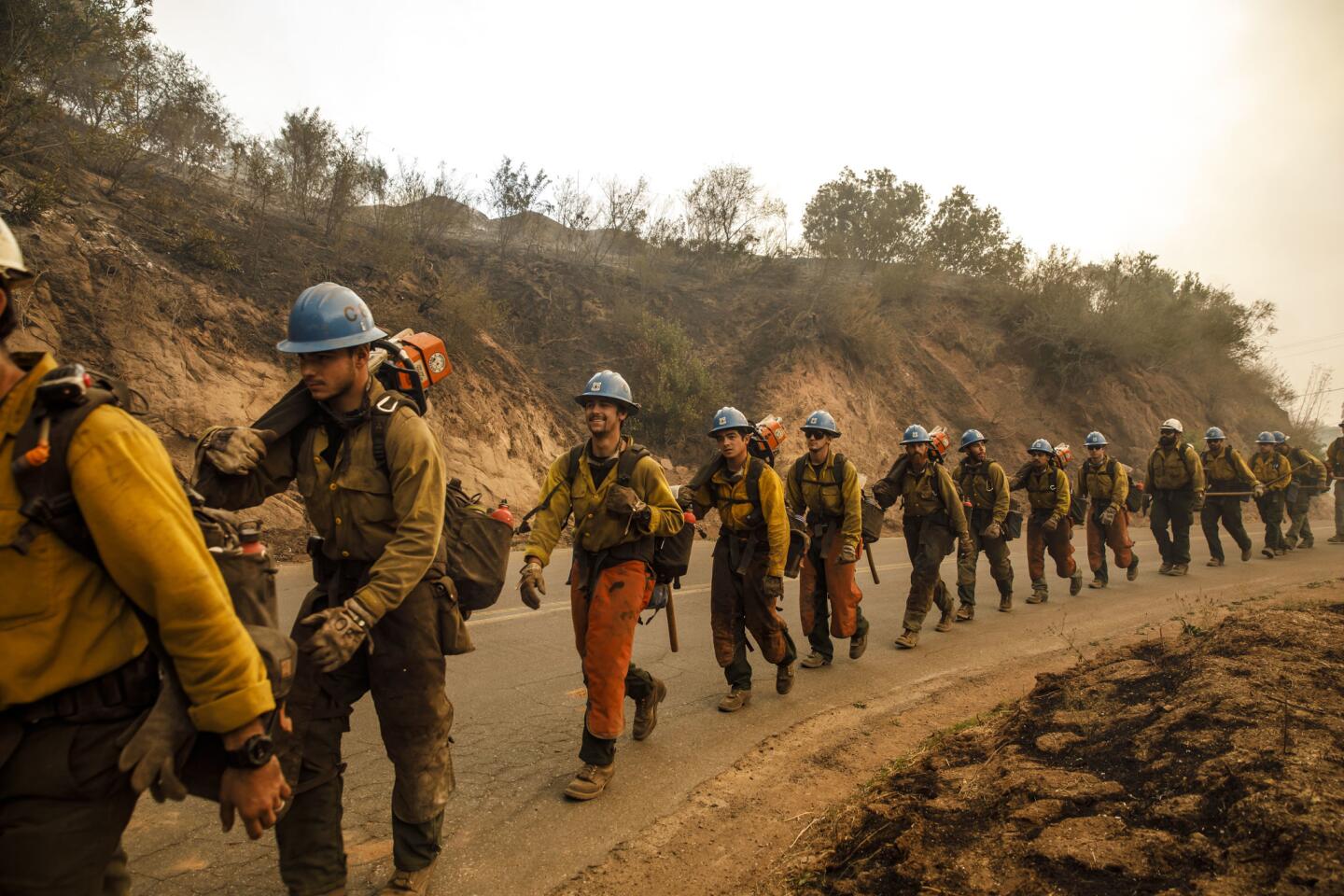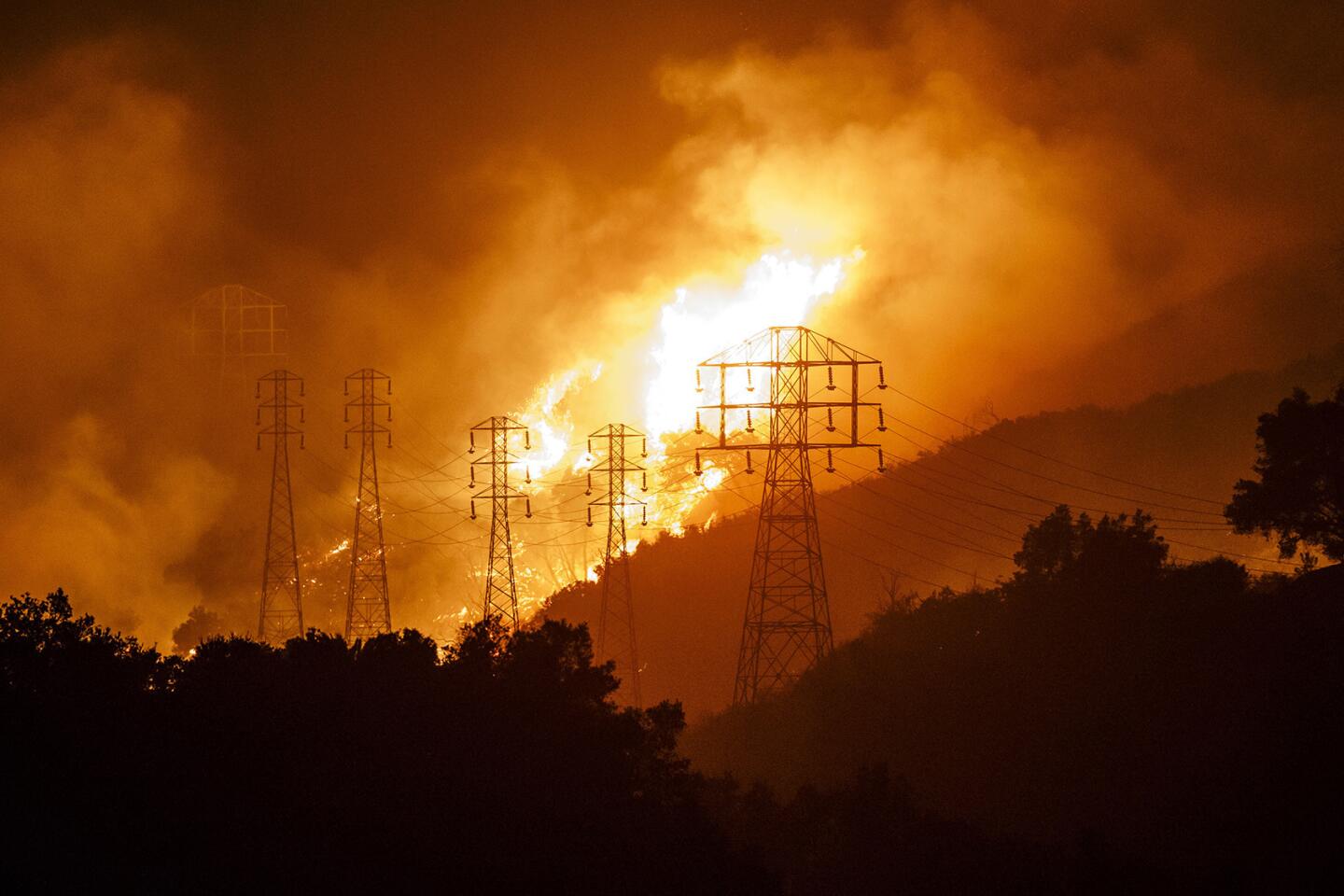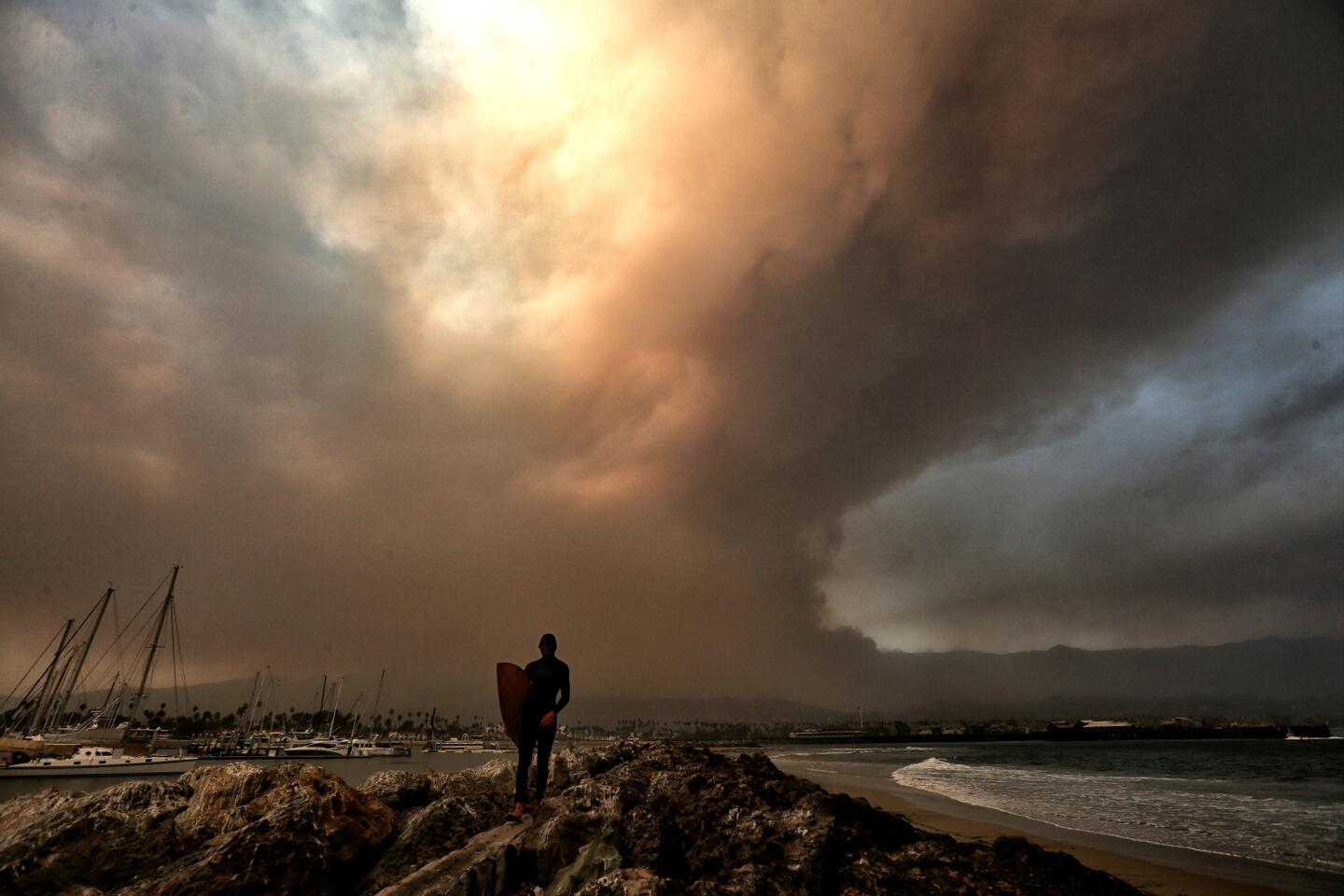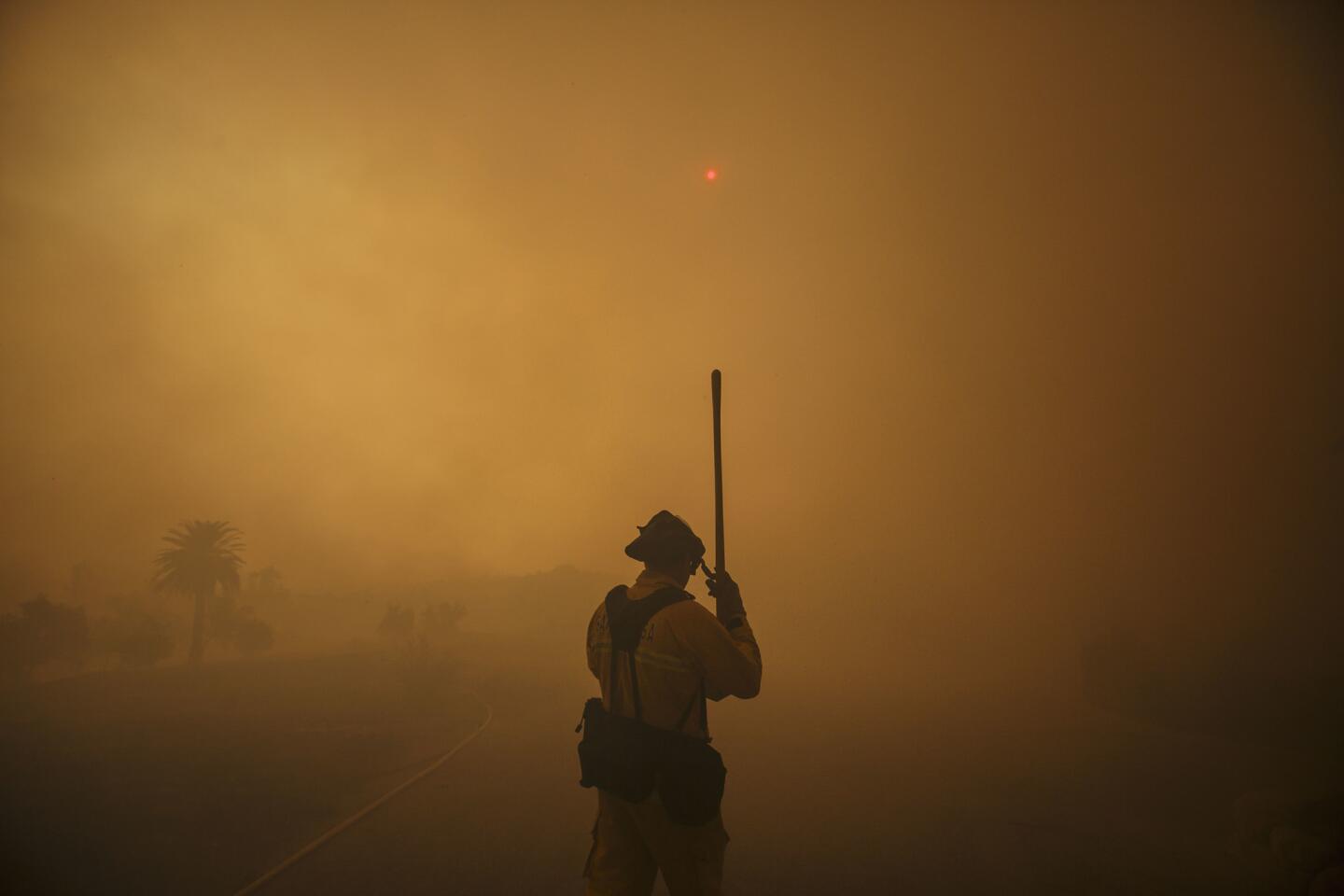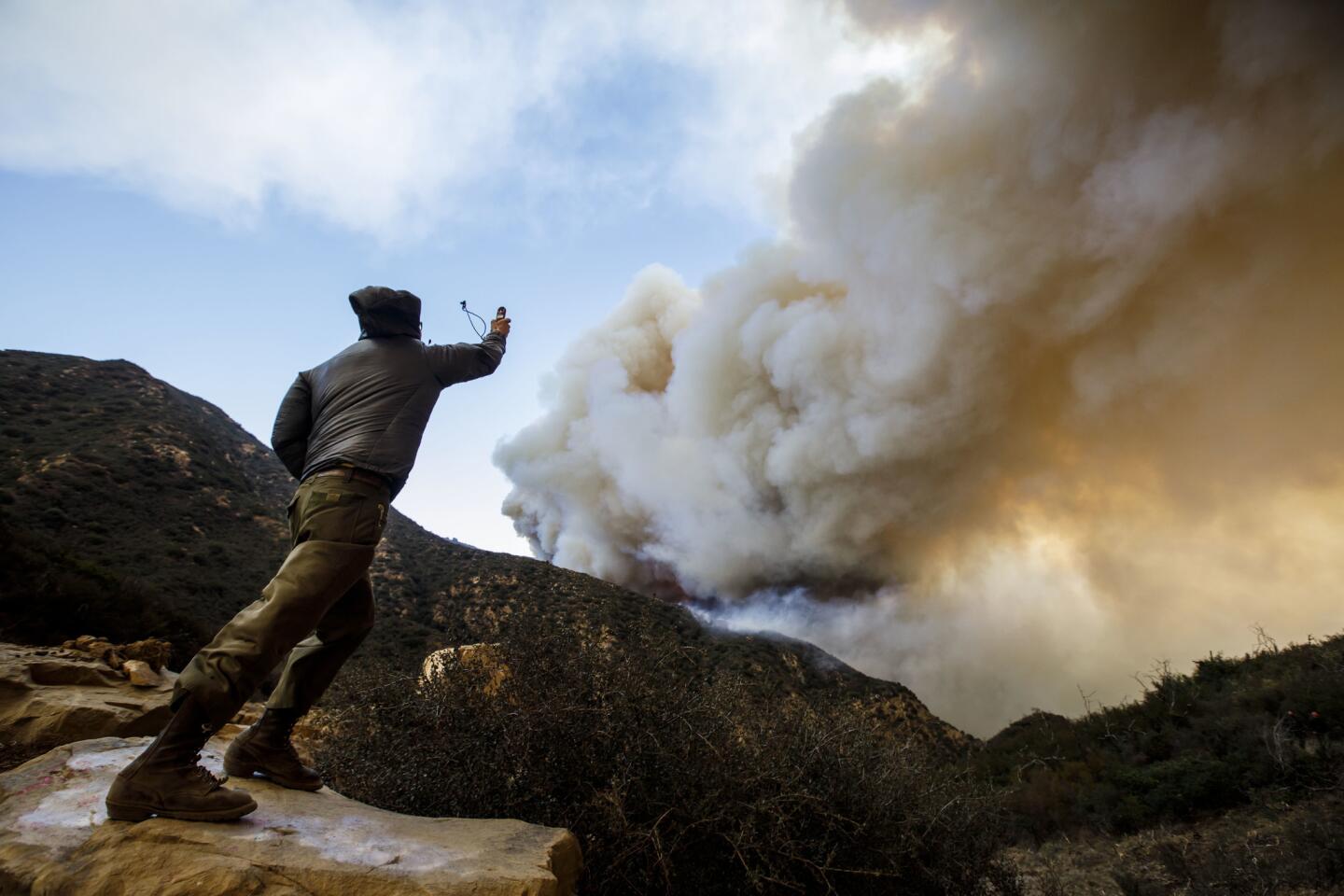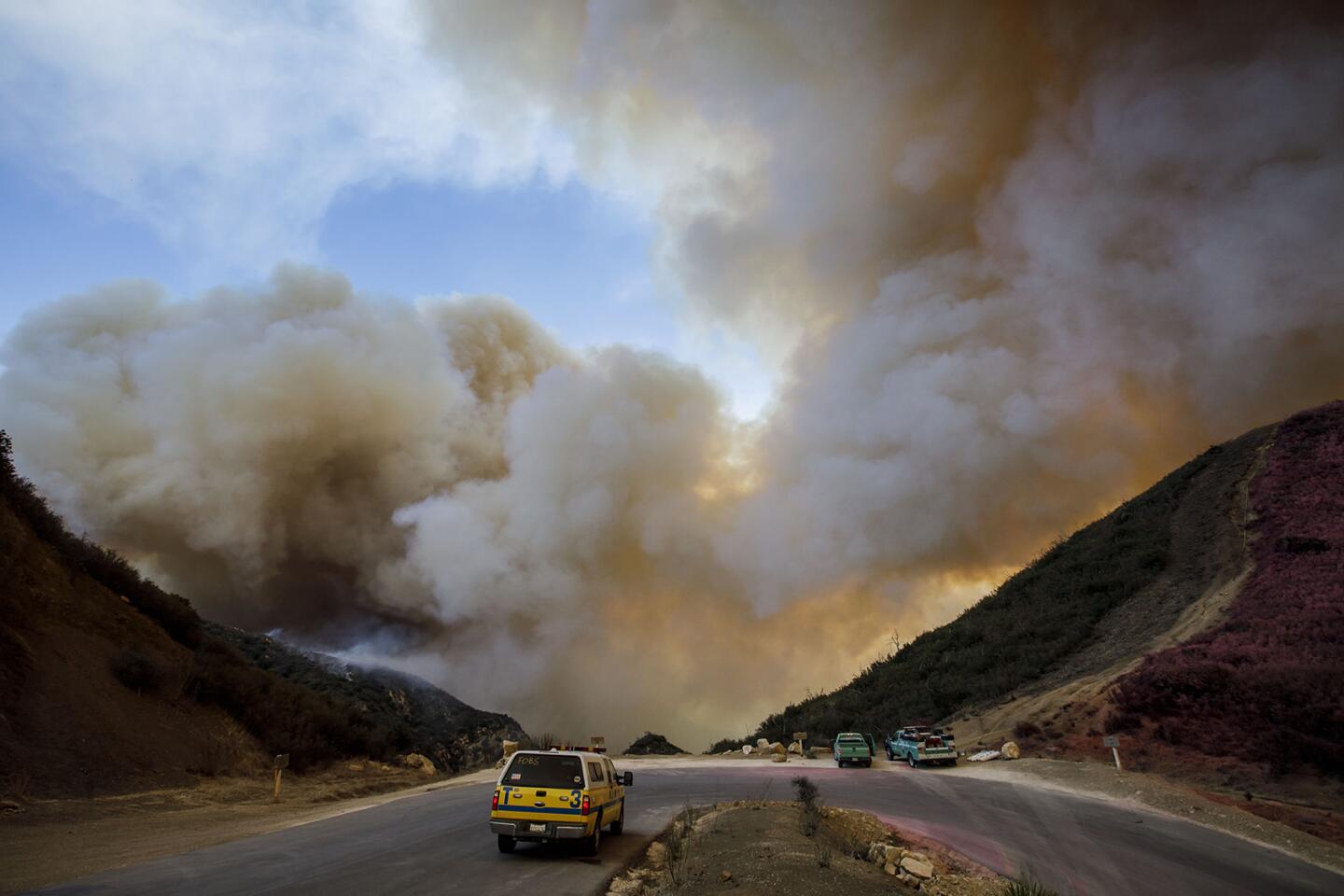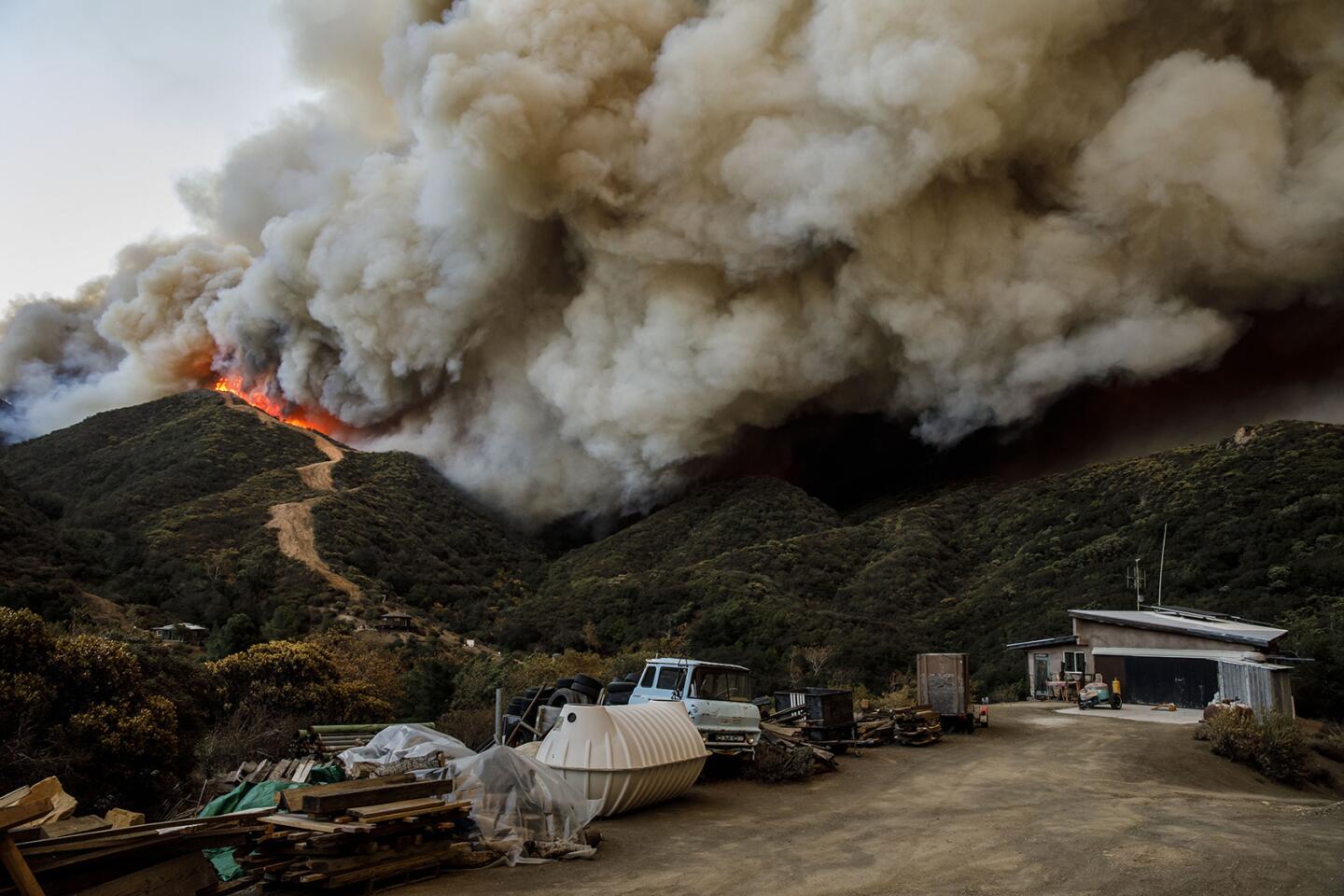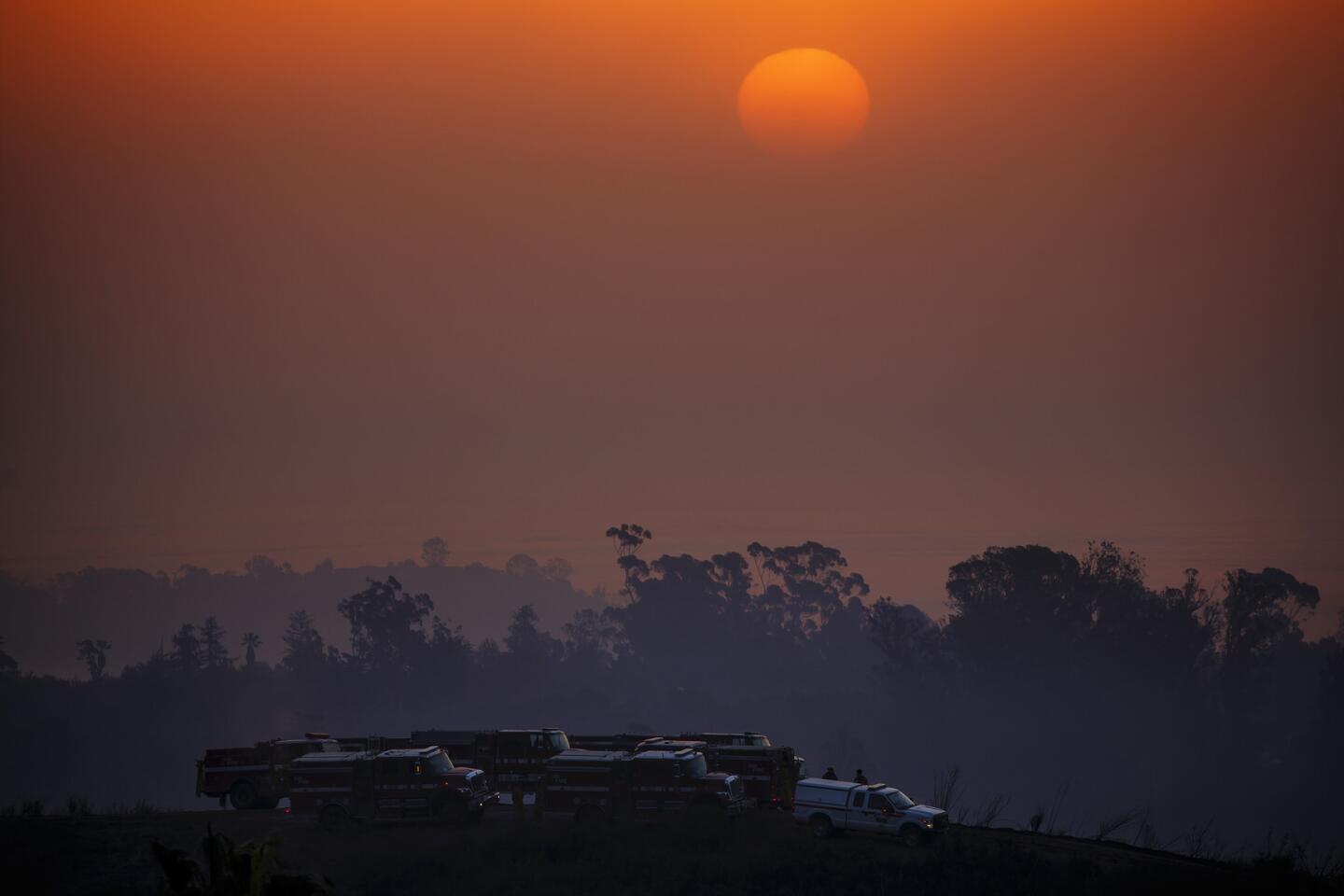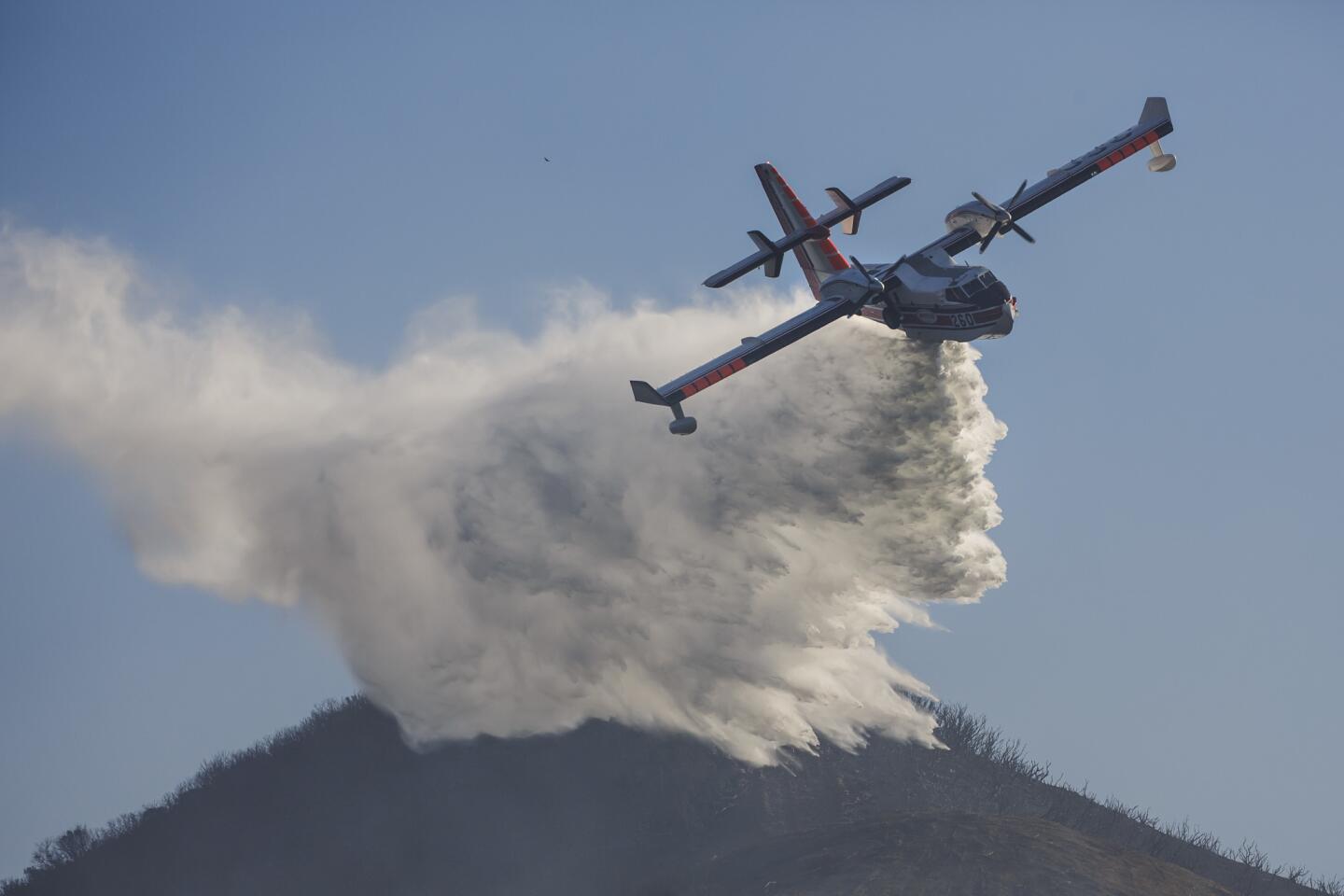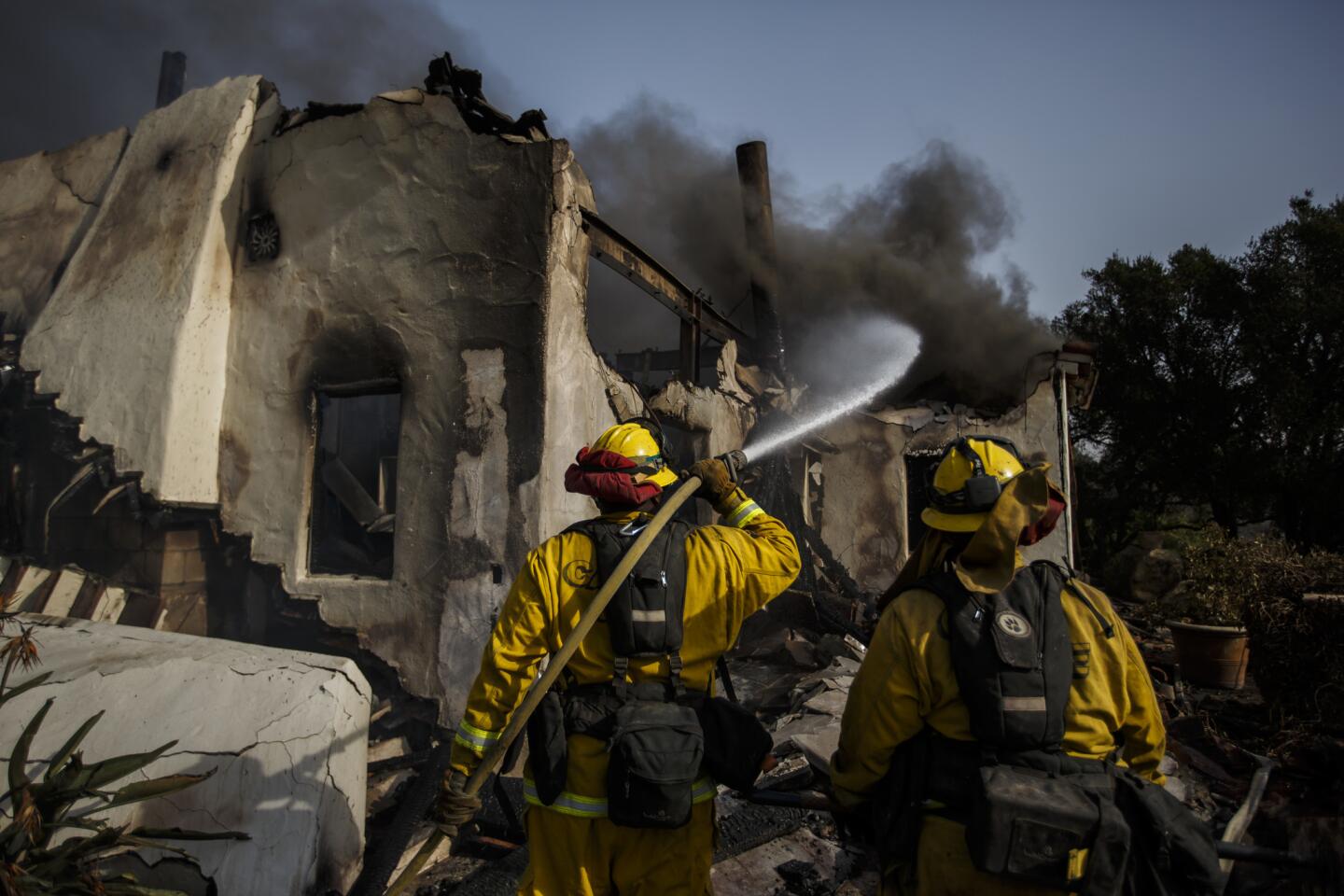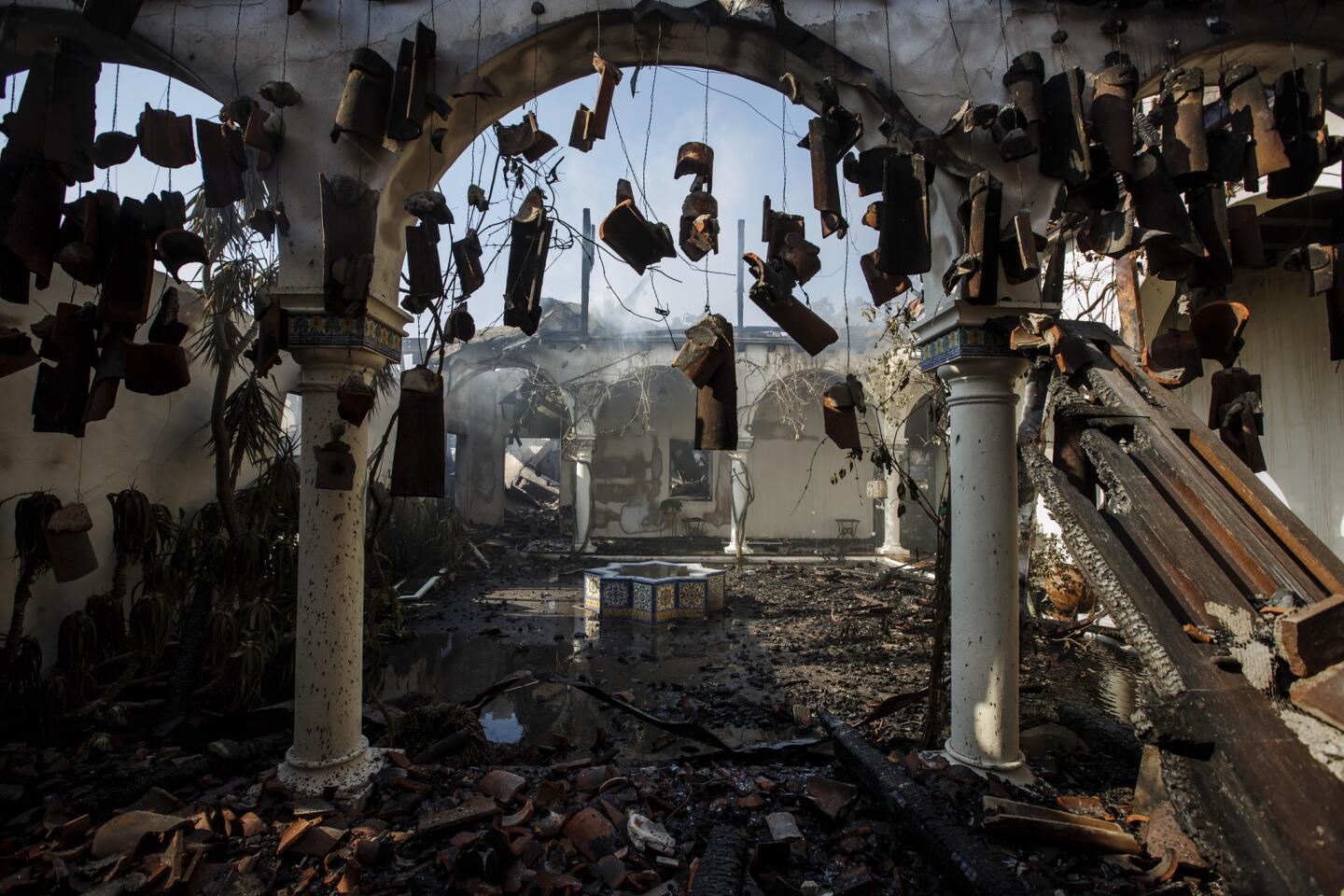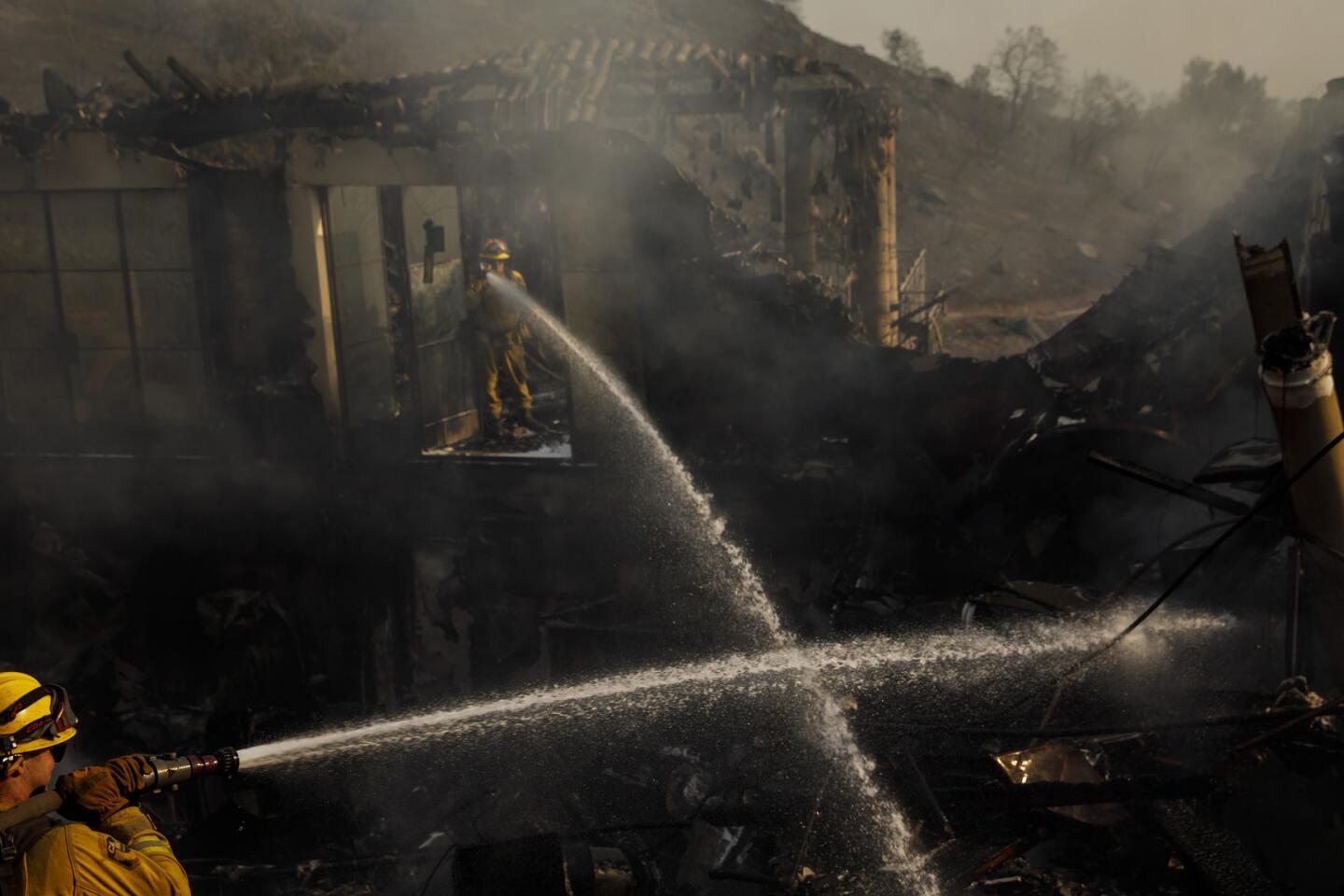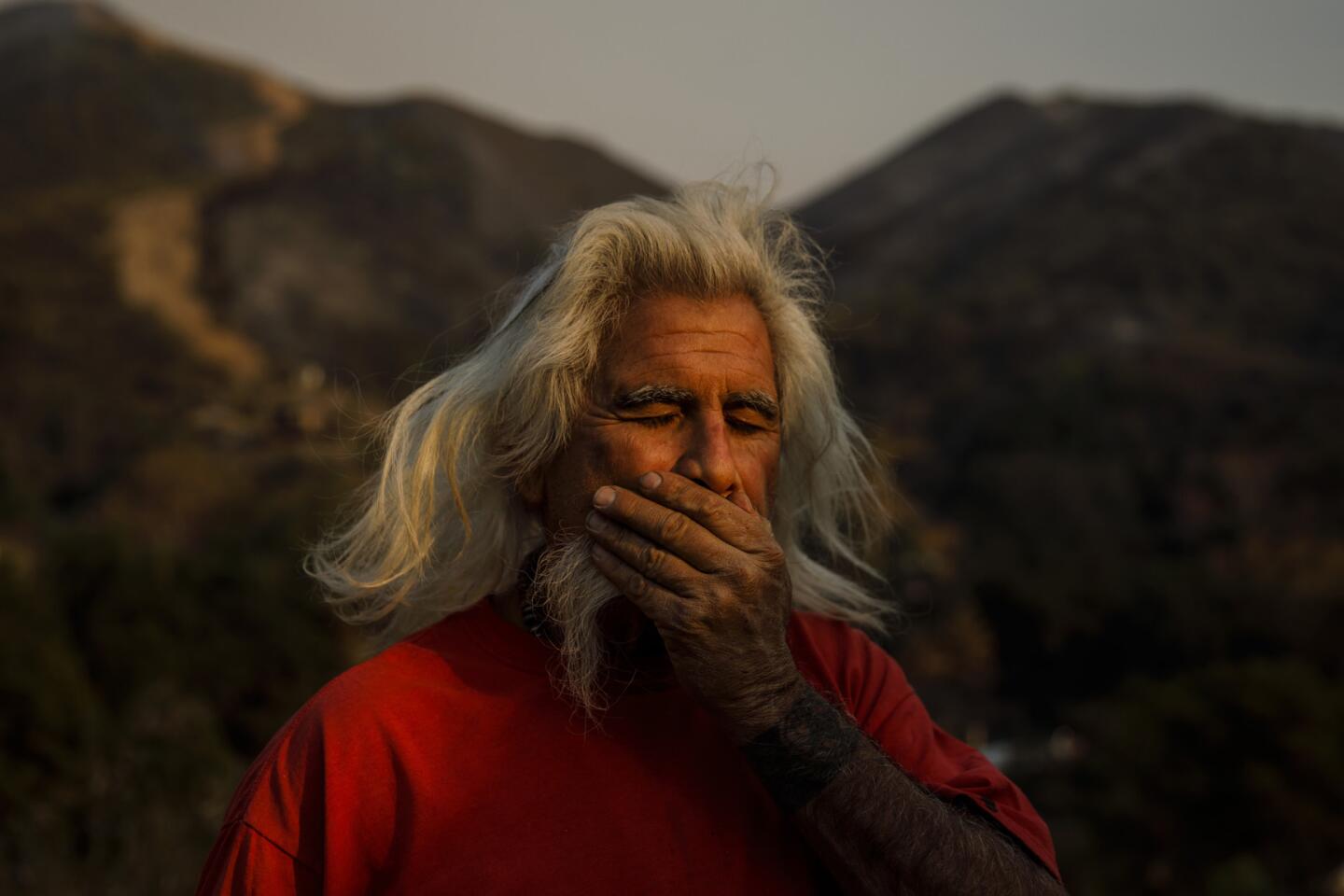California Journal: Mesmerized by the terrible beauty of the flames, waiting for the Santa Anas to do their worst
- Share via
Reporting from Ojai — Just east of Ojai, where the citrus orchards back up to the Los Padres National Forest, I pulled my car over and got out. It was pitch black, but for the orange glow of the blazing mountain.
There was barely a breeze.
But that could change quickly. We are having a Santa Ana moment right now. The strong, dry winds blow down from the desert a few times a year, though not usually in December. Fierce and unpredictable, the Santa Anas have a firm grip on the collective imagination of this part of the state.
Behind the fruit-laden trees, the fire was climbing and weaving its way up the steep terrain. A couple miles away, Ojai locals held their breath, wondering if the high winds predicted for later would consume their charming town, laying waste to the white arches of the downtown’s long Spanish arcade, and the sense of well being that comes with living in an upscale rural enclave.
Live updates: Southern California fires »
Along Ojai Avenue, the Christmas decorations were up, but the place was a ghost town. Too much smoke, too much danger. White ash was floating out of the sky, giving a perverse impression of a white Christmas.
On Thacher Road next to an orchard, I stood transfixed, staring at the fire’s terrible beauty, marveling at the wildness of it, the power of it, the anarchy of it. Behind me, I heard what sounded like running water. I crossed the street and stared at the ground under the lemon trees. Smart, I thought. Someone left the water on. Any moisture would help keep the fire at bay if the winds were to kick up. The winds always kick up.
To a Southern Californian, there are fewer word combinations more frightening than “Santa Ana winds” and “high fire risk.”
This week, we saw why.
“We are in the beginning of a protracted wind event,” the state’s fire chief, Ken Pimlott told The Times Wednesday. “There will be no ability to fight fire in these kinds of winds.”
::
The fires on both ends of the state this year had one thing in common: fire driven by winds with gusts that reached hurricane force. In the north, the winds are called Diablo, a more apt name than the benign-sounding Santa Ana.
In Sonoma, Napa and Mendocino counties, the fires started before midnight one October night and did their worst before dawn. There was little time for notification, less for evacuation; more than 40 people died.
Here, in Los Angeles and Ventura counties, we were “lucky,” if you can use that word to describe the loss of hundreds of homes. But people had some warning before the Santa Ana winds blew sheets of fire across the landscape. There was time to get out. People, anyway.
Dozens of horses burned to death on the Padilla Ranch in the northeast San Fernando Valley on Tuesday. My colleague Irfan Khan’s graphic photos were some of the most disturbing fire images I’ve ever seen. I can’t imagine the grief of the Padillas, which must be wrenching, nor the terror of the horses, trapped in their paddocks.
On Tuesday afternoon, I had to turn off the television because a TV news station kept a camera trained on a white horse in its pen. “Doesn’t look like anyone’s coming,” the newscaster said. I could not bear to watch the skittish, trapped creature. (Please, someone, tell me it was rescued.)
As I stared at the Thomas fire in the hills above Ojai, I thought of the Pascoes and Shepherds, and the wind-driven fires that changed their lives. John and Jan Pascoe outfoxed the Tubbs fire in Santa Rosa by immersing themselves in a swimming pool for six hours. Jon and Sara Shepherd were seriously burned as they tried to escape their mountaintop home in Redwood Valley. Their son, Kai, 14, perished on the spot. Kressa, 17, was hospitalized with severe burns and died three weeks later.
So far, the death of one woman has been associated with the quartet of blazes that began Monday and Tuesday, turned the sky over the L.A. Basin the color of cafe au lait and made freeway commutes even more hellish than usual.
There are people who love heat, and cold, and rain and snow, and even a few who get a thrill out of the rumble of an earthquake (me). But I have never met anyone who likes the Santa Ana winds.
In the literature of California, they are a portent not just of fire but of evil itself.
“Meek little wives feel the edge of the carving knife and study their husbands’ necks. Anything can happen,” Raymond Chandler wrote famously in “Red Wind.”
“It is hard for people who have not lived in Los Angeles to realize how radically the Santa Ana figures in the local imagination,” wrote Joan Didion, in a 1965 essay. “The violence and the unpredictability of the Santa Ana affect the entire quality of life in Los Angeles, accentuate its impermanence, its unreliability. The wind shows us how close to the edge we are.”
I don’t get so irritable that I fantasize about killing anyone. And I don’t think there is a soul here who imputes as much deep meaning to a weather pattern as Didion, God bless her.
But the Santa Anas are just so damn unpleasant.
The Saharan dryness and low air pressure inflict sinus headaches, make fingernails brittle, and suck the moisture right out of your skin, turning you into a lizard with a human face.
I left Ojai and drove over to Santa Paula, dodging tumbleweeds on a two-lane highway. Between Santa Paula and Fillmore, around the Sespe Condor Sanctuary, the mountain slopes were on fire. Drivers pulled over to the shoulder to gawk at the ridiculously beautiful blaze.
At about 9 p.m., the winds kicked up just as the fire chief predicted. The smoke plume I’d been watching drift straight up suddenly shifted. It began rolling west, like a huge, roiling storm cloud. Within hours, the winds pushed the fire all the way to the ocean.
As I drove east toward Simi Valley, an immense moon rose over the fire.
I have never in my life seen the man in the moon’s face so clearly. He looked straight down at us, his mouth in a crooked smile.
It made me feel like things were going to be OK.
Twitter: @AbcarianLAT
ALSO
As winds kick up again, tall flames menace communities far and wide
L.A. County animal control details its response to stable where horses died in Creek fire
Why is Southern California burning in December? A climate scientist’s answer
More to Read
Sign up for Essential California
The most important California stories and recommendations in your inbox every morning.
You may occasionally receive promotional content from the Los Angeles Times.
